El Suunto Vertical supone un enorme salto cualitativo para la marca. El punto de inflexión llegó el año pasado con la presentación del Suunto 9 Peak Pro, pero se materializa realmente con este nuevo modelo. ¿El nexo de unión? Ambos llegan al mercado tras la compra de Suunto por parte de Liesheng, el motor de esta transformación.
¿Hay novedades en el Vertical? Para Suunto hay unas cuantas, pero para el segmento no demasiadas. Y a pesar de eso el Suunto Vertical va a ser sin duda uno de los lanzamientos más importantes de este año. Suunto no ha incorporado nada que los demás no tengan, pero todo lo que ha añadido al reloj ha sido «al estilo Suunto»: fiabilidad, calidad, simplicidad. Lo que la compañía denomina ADN Suunto.
No te equivoques, que no haya cosas nunca antes vistas no quiere decir que el Vertical no se convierta en referencia en muchos aspectos. Autonomía ridículamente alta incluso con multibanda (en serio) combinada con una enorme superficie de carga solar, mapas que se pueden descargar al reloj vía WiFi, la mejor recepción de satélites del mercado, nueva pantalla, nuevo sensor de pulso óptico… muchas pequeñas cosas que al final hacen un gran paquete.
Llevo ya varias semanas probando el Suunto Vertical, así que ya estoy en disposición de señalarte lo bueno y lo que todavía hay que mejorar, porque así es como trabajo. En estos análisis no hay contraprestación de ningún tipo por parte de los fabricantes por lo que mis opiniones son totalmente libres.
Así que si te gusta el trabajo que realizo en estas pruebas y quieres colaborar con la página web, puedes hacerlo comprando a través de los enlaces publicados. Y no dejes de unirte al canal Telegram porque ahí publico un montón de chollos de forma regular. ¡Gracias por tu soporte!
Navegar a secciones específicas
- SUUNTO VERTICAL
- Suunto Vertical, todas las novedades
- Muchas novedades, pero la base sigue siendo igual
- Mapas de navegación en el Suunto Vertical
- Autonomía y carga solar
- Cosas que aún faltan en el Suunto Vertical
- Rendimiento GNSS del Suunto Vertical
- Sensor de pulso óptico
- ¿Quieres ayudar a la web? Comprar Suunto Vertical
SUUNTO VERTICAL
Funcionamiento global - 8.5
Posibilidades de entrenamiento - 7.5
Plataforma y aplicaciones - 9
Autonomía - 10
Acabados y comodidad - 9.5
Relación precio/prestaciones - 9
8.9
TOTAL
Con el Vertical, Suunto está en el punto más importante de su historia, quizá no desde 1936 pero sí de las últimas décadas. Hay mucho trabajo y muchas esperanzas puestas en este dispositivo que marcan el comienzo de una nueva era. Mapas, WiFi, carga solar multibanda, autonomía de récord... ¿Suficientes razones para que el usuario Suunto no vaya a otra marca? ¿Y para hacer que los que están en otra marca, vayan a Suunto?
Lo mejor
- Recepción de satélite como nunca antes se había visto
- Autonomía increíble, incluso en el modo multibanda
- Mapas descargables con un uso de brújula sobresaliente
- Por fin dos SuuntoPlus de forma simultánea
- Precio competitivo con respecto a lo que hay en el mercado
- Suunto compensa la huella de carbono de todos y cada uno de sus relojes fabricados
Necesita mejorar
- Sensores, perfiles multideporte, emojis… las quejas de siempre
- Aún sin seguimiento de variabilidad de frecuencia cardíaca
- Mapas no rutables
- Hay un poco de lag en algunos puntos del menú
Suunto Vertical, todas las novedades
Antes de entrar en detalle pormenorizado deja que te haga un listado completo de cuáles son las novedades que aporta el Suunto Vertical, y así tendrás una referencia rápida.
- Nueva pantalla Sharp de 1.4″, táctil y de alto contraste
- Cristal de zafiro en cualquiera de sus versiones
- Iluminación automática de pantalla con sensor de iluminación
- Dos modelos disponibles: acero y titanio (bisel, cuerpo y tapa, sólo una pequeña parte es polímero)
- Carga solar en Suunto Vertical titanio para un +30% de autonomía
- 49mm de circunferencia
- 86 gramos de peso en el modelo acero, 74 gramos en el modelo titanio
- Correa 22mm
- Mapas para navegación de rutas
- 3 estilos de mapas: outdoor, oscuro y alto contraste
- Descarga de mapas por comunidades, directamente a través de WiFi en el reloj
- 32GB de memoria interna
- Posibilidad de activar dos aplicaciones SuuntoPlus de forma simultánea
- Posibilidad de cambiar de aplicaciones SuuntoPlus durante la actividad
- Menú para seleccionar qué widgets tenemos visibles en el reloj
- Widget de salida y puesta de sol, horas de luz y fase lunar
- Widget del tiempo (y dato en la esfera de reloj) con datos de Openweather
- Widget de energía solar con la incidencia de las últimas 3h y últimos 7 días
- Feedback de voz, a través del teléfono móvil, con información de lap y zona de FC
- Función linterna, activando la iluminación de la pantalla al 100%
- Nuevo sensor de pulso óptico
- Chipset multibanda y antena casi 360º
- Hasta 60 horas con doble banda y todos los sistemas de satélite (85 horas en solar), 90 horas con monobanda todos los sistemas (140 horas en solar), hasta 140 horas en modo ahorro energía con todos los satélites 1s (280 horas en solar) y un nuevo modo Tour con 500 horas y batería infinita en la versión solar
- Hasta 60 días en modo reloj, 1 año en la versión solar
- Carga rápida de sólo 1 hora y pico para 100% de batería, 10 horas de entrenamiento con 10 minutos de carga
- Modos de buceo snorkel y buceo de sirena, con seguimiento de inmersiones hasta 10 metros
- Aplicación con todas las métricas TrainingPeaks y Suunto Coach con consejos de entrenamiento, recuperación y progreso
- Fabricado en Finlandia con 100% energía renovable
- Certificado de resistencia militar MIL-STD-810H
- Sumergible 100m
- Precios: 599€ Suunto Vertical acero, 799€ Suunto Vertical titanio solar
Un resumen rápido de sus novedades es que tiene mapas, una autonomía líder en el mercado, la carga solar que más aporta a la batería y una recepción GNSS que nunca antes se había visto. No es mala la carta de presentación inicial de este Suunto Vertical.
Muchas novedades, pero la base sigue siendo igual
El Suunto Vertical representa una nueva era para la marca finlandesa, pero no por ello es un borrón y cuenta nueva, no se trata de una revolución donde se haya cambiado absolutamente todos lo que Suunto tenía hasta ahora.
Interfaz de usuario, botones, estética, tacto, «feeling»… todo eso sigue siendo Suunto. La interfaz de usuario es la misma que Suunto renovó el año pasado con el Suunto 9 Peak Pro. El método de control es el mismo que hasta ahora, pantalla táctil junto con tres botones en el lado derecho. Aunque ahora hay un pequeño cambio, y es que el botón central se encuentra resguardado por el superior e inferior que sobresalen un poco más.
Verás que hay dos puntos amarillos en los botones superior e inferior. Según Suunto, están ahí para agudizar el sentido cuando vas a buscar los botones. Aunque lo parezca, no son luminiscentes.
Con respecto a los botones agradecería un diseño similar al de los Suunto 5, que no tienen pantalla táctil y la suplen con dos botones adicionales. Uno para iluminación y otro para retroceder en el menú.
Aunque es cierto que el reloj reconoce muy bien el gesto del giro de muñeca y la respuesta es muy rápida (además de que cuenta con sensor de iluminación), he tenido momentos en los que lo he echado en falta. Pero más importante me parece el botón de retroceder, que en el diseño de tres botones nos obliga a deslizar el dedo en la pantalla -que a veces no reconoce- o a mantener pulsado el botón central -que no es la forma más rápida de moverse-.
Sobre la pantalla táctil el funcionamiento es bueno, incluso estando mojada. Si bien es cierto que durante el uso habitual del reloj apenas la utilizo, prefiero los botones, cuando toca explorar en el mapa su uso es crucial.
El bisel del reloj combina zonas lisas con zonas estriadas.
Las zonas estriadas, según indica Suunto, son para ofrecer más agarre a la hora de sujetar el reloj y operar los botones, especialmente al utilizar guantes. Dificultan que se resbalen los dedos.
La calidad de materiales y fabricación es muy buena, típica Suunto. El Vertical está disponible en dos versiones, en acero o titanio para bisel y caja del reloj.
Pero ese bisel va más allá de ser un mero elemento estético, se trata de una parte de suma importancia para el Suunto Vertical. Es la propia antena de recepción GNSS, de casi 360º de cobertura. Por tanto no importa cómo lleves el reloj en la muñeca o que no lleves la mano en horizontal, siempre habrá alguna zona con recepción directa de satélites.
La pantalla es totalmente nueva. Y eso se nota en cuanto a contraste y visibilidad, que mejora con respecto a los modelos anteriores de Suunto. Eso sí, seguimos manteniendo los reflejos típicos del cristal de zafiro, por lo que según cómo sea la incidencia de la iluminación puede dificultar la visibilidad en mayor o menor medida. Pero esto ocurre igual en cualquier reloj con cristal de zafiro.
El diámetro de la caja es de 49mm, así que a pesar de ser un reloj grande no se ve inmenso en la muñeca. La pantalla de 1,4″ ocupa gran parte de la superficie frontal del reloj.
En la versión titanio la zona de carga solar también ocupa una parte importante de la superficie, mucho más grande que la que tenemos por ejemplo en los relojes de Garmin. Puedes verla comparada a continuación con la del Garmin Forerunner 955 Solar.
La correa, por su parte, es de 22mm. La misma medida que por ejemplo los Suunto 9 Peak. Así que si estás actualizando desde ese modelo y tienes correas adicionales las podrás aprovechar.
No obstante la correa de Suunto es cómoda y bastante elástica. Es de silicona, por lo que no es la más ligera. Para ello podríamos utilizar las de tipo velcro que llegaron con los Suunto 9 Baro Titanium o Suunto 7 Titanium. Pero la correa que trae de serie es parte importante de la estética del reloj.
En el apartado de software el Suunto vertical también incorpora algunas novedades. Por ejemplo, otra esfera de reloj que, en el caso de la versión Titanio con carga solar, incluye información de la incidencia solar en la parte inferior.
Las barras indican la incidencia solar en las últimas 3 horas, cuanto más tiempo pases a la luz del sol más «relleno» tendrán esas barras.
Esta esfera también es más completa que las que Suunto utilizaba hasta ahora, ya que ahora dispone de «complicaciones» que se pueden cambiar. Los dos datos que aparecen en la parte superior se pueden cambiar, para ello basta con pulsar en cada uno de ellos y cambiarán por otro dato. Fecha, altitud, hora de anochecer, batería restante, el tiempo y algunas más.
Tenemos nuevos widgets. Empezando por uno de energía solar para el Vertical Titanio.
Además de darnos la misma información que en la esfera principal, si deslizamos hacia abajo también tendremos el aprovechamiento del sol en la última semana.
Hay un widget del tiempo, que se actualiza de forma automática cuando estamos cerca del teléfono móvil, con datos de la plataforma Openweather. Además de climatología actual también ofrece pronóstico para las próximas 8 horas; datos de humedad, viento y probabilidad de lluvia; y por último calidad del aire para tenerlo en cuenta a la hora de pensar en un entrenamiento.
Lo cierto es que es el widget de este tipo que más información aporta de todo lo que hay en la competencia, especialmente por los datos de humedad, viento y calidad del aire.
Y por último tenemos un tercer nuevo widget, con las horas de salida y puesta de sol, horas de luz y fase lunar. En este caso sí es todo bastante estándar.
Siguiendo con las nuevas funciones ahora tenemos una opción de linterna. No es una linterna con hardware dedicado como en el Garmin Fenix 7X (y recientemente en todos los Fenix 7 Pro y Epix Pro), sino que utiliza la iluminación de la pantalla para darnos luz.
No es un faro ni hará que te vean a tres kilómetros de distancia, pero cumple para tareas menores como acertar con la cremallera de un saco de dormir o encontrar la cerradura de una puerta.
Pero te puedo dejar esta foto para que veas cuál es la cantidad de luz que puede llegar a ofrecer en una habitación oscura.
Como puedes comprobar no es de gran potencia, pero sí puede ser suficiente para cierto tipo de usos. Sin embargo tengo algunas quejas con la implementación.
La primera de ellas es que no hay un acceso directo, por ejemplo manteniendo pulsado algún botón. Para activarla tenemos que entrar al menú y buscar la opción de linterna, algo no demasiado práctico para una función que está ahí para cuando necesitas luz de forma rápida.
La segunda queja es que la linterna sólo durará encendida 30 segundos. Después de ese tiempo el reloj vuelve al menú principal de forma automática. Entiendo que es una función que consume batería… pero es difícil que te olvides de que está activada, en primer lugar porque tenemos una luz emitiendo desde la muñeca y en segundo lugar porque no tenemos la hora en pantalla.
Corregido tras la primera actualización de Suunto. Tras las «quejas» generalizadas la iluminación pasa a estar encendida durante 10 minutos en lugar de apagarse tras 30 segundos.
El manejo de perfil de deportes continúa siendo el mismo. El Suunto Vertical dispone de decenas de perfiles diferentes que vienen predefinidos (con la configuración que Suunto cree mejor para cada uno) y no se pueden editar. Pero puedes crear tu propio perfil para cualquiera de esos deportes y llamarlo como te dé la gana. Un sistema que funciona perfectamente y al que el usuario Suunto ya está más que acostumbrado.
Sin embargo seguimos con la limitación de los perfiles multideporte como triatlón, duatlón y demás… pero de eso ya hablaré más adelante.
La configuración del perfil de deporte se hace desde la aplicación móvil, aunque comparado con la competencia es algo limitado. Esa limitación se entendía cuando los requisitos de memoria de la anterior generación suponían un freno, pero en esta nueva plataforma no debería haberlo.
Sólo podemos configurar tres pantallas de datos diferentes, en las que podemos elegir entre datos que configures tú mismo (con un máximo de siete) o bien pantallas predefinidas con gráficos, tabla de vueltas, zonas de intensidad o intervalos.
Posiblemente las tres pantallas de datos sean más que suficientes para la inmensa mayoría de usuarios, pero si te gusta tener pantallas con los datos en gran tamaño vas a estar bastante limitado.
El resto de configuraciones de los perfiles se hacen directamente desde el reloj. El modo de batería, objetivo, lap automático, la luz y el color de fondo, etc. También las opciones de SuuntoPlus que, con el Suunto Vertical, se amplía a dos de forma simultánea.
SuuntoPlus son pequeñas aplicaciones que podemos añadir al perfil y que añadirán pantallas adicionales. Por ejemplo aplicaciones de terceros, como la posibilidad de utilizar las gafas inteligentes de ActiveLook, pero también otras más básicas como métricas de TrainingPeaks o Strava.
Es muy positivo que Suunto haya ampliado la posibilidad de uso a dos SuuntoPlus de forma simultánea, así como permitir activar o desactivar las funciones sin necesidad de detener la actividad, pero muchas de estas funciones deberían estar integradas en los perfiles de deporte y no depender de una aplicación externa (por ejemplo añadir métrica de TSS o potencia nominal en cualquier página de datos, y no en la exclusiva de TrainingPeaks).
Hay una segunda limitación y es que si estás haciendo un entrenamiento por intervalos, éste se carga como una guía SuuntoPlus (un entrenamiento no deja de ser una aplicación, pero de uso esporádico) por lo que sólo dejará «espacio» para cargar otro SuuntoPlus adicional.
Pero bueno, entiendo que quizás son limitaciones de la anterior plataforma, así que aquí hay espacio para mejorar.
En el menú encontramos otra nueva opción, feedback de voz. Si lo activamos, recibiremos mensajes con información en las vueltas automáticas o cuando cambiamos de zona de frecuencia cardíaca.
Las alertas se escucharán a través del teléfono móvil o de los auriculares que tengas emparejados con el teléfono, pero no a través del reloj (porque no tiene altavoz).
Y por recordar algunas de las novedades presentadas en el Suunto 9 Peak Pro y que también están presentes en el Suunto Vertical, tenemos estimación de potencia en carrera.
No hay cambios en referencia a lo que llegó con el 9 Peak Pro.
En cuanto al altímetro barométrico también permite su uso para buceo en los perfiles de snorkel y buceo de sirena. No voy a extenderme porque ya comenté al respecto en el análisis del Suunto 9 Peak Pro, pero sí recordarte que son unos perfiles que, si bien no van a servir a los buceadores más serios (el límite de registro es hasta 10 metros de profundidad), sí es una opción que puede ser bastante divertida para cuando decides salir del chiringuito y darte un remojón en la playa… o mucho más que eso.
Y ahora que muestro la aplicación, la Suunto App se está convirtiendo en una baza muy importante para la marca. Es cierto que el paso desde Movescount a Suunto App fue bastante catastrófico, y se estudiará en las universidades como la forma en la que no hay que hacer una migración de plataforma… pero el resultado final ha merecido la pena.
Suunto App ahora mismo es, posiblemente, la mejor aplicación de entre toda la competencia. Quiero hacer un vídeo para el canal de YouTube detallando un poco más todas las novedades que se han ido presentando, a ver cuándo puedo sacar tiempo para ello.
Recientemente ha añadido todas las métricas de seguimiento de carga de entrenamiento de TrainingPeaks (quizás el método más científico y, para los que somos triatletas, nuestra biblia personal).
Y acaba de añadir Suunto Coach para dar indicaciones y consejos a los menos expertos tanto en entrenamiento como en los datos que facilita TrainingPeaks.
Si la aplicación es tan buena, ¿qué falta entonces? Pues tener todos estos datos en el reloj de alguna manera, ya sea como un widget o como alguna otra opción dentro del reloj, pero que no sea necesario entrar en la aplicación para poder visualizarlo. Es algo que está presente en la competencia y que Suunto debe añadir también en el Vertical.
En definitiva son cosas para permitir dar cohesión a la plataforma, mejorar el ecosistema Suunto y hacer que todo ello tenga un mejor funcionamiento colectivo. Pero estoy seguro que todo esto lo saben de sobra en Suunto y que los bolsillos más profundos de los nuevos propietarios harán que sea posible.
Posiblemente los mapas sean la novedad más importante del Suunto Vertical, o al menos una de las funciones más demandadas por todos vosotros. No es el primer reloj de la marca en contar con mapas, ya el Suunto 7 lo hacía, pero es en un reloj con la orientación del Vertical donde hacía falta, pues es precisamente el que tiene batería suficiente para perderse en la montaña y necesitar esos mapas.
Hay una serie de cosas bastante interesantes en los mapas de Suunto, resueltos de muy buena manera. Disponemos de 32GB de espacio para descargar mapas, pero no será fácil llenarlos dada la fantástica gestión que ha planteado Suunto.
Eso sí, debes tener en cuenta que el reloj no trae los mapas descargados y será de las primeras cosas que tendrás que hacer nada más sacar el reloj de la caja.
No es un proceso complicado, simplemente tomará unos minutos y la descarga se produce directamente en el reloj a través de la conexión WiFi de la que dispone, todo ello comandado desde la aplicación.
Pero la gestión es bastante inteligente, porque según cada país puedes descargar el mapa completo o como en el caso de España (y muchos otros) hacerlo por comunidades. En mi caso por ejemplo he descargado Andalucía que es la zona en la que salgo habitualmente y, si tengo que viajar a alguna otra comunidad o país, simplemente descargo la zona que me interesa.
Esto hace que la gestión sea muy rápida, porque evita tener que descargar por ejemplo el mapa completo de Europa. No por capacidad de memoria, porque con 32GB tenemos espacio de sobra, sino porque la transmisión lleva su tiempo (como en cualquier dispositivo de este tipo). Una solución por cable sería más rápida, pero también es cierto que no vamos a estar descargando mapas de forma constante.
Cada mapa incluye tres estilos diferentes: outdoor, oscuro y alto contraste. Dependiendo de qué uso vayas a hacer preferirás un estilo u otro.
En general será el estilo outdoor el que vayamos a utilizar, o al menos el más habitual. Aquí puedes ver cómo se ve en cada uno de los diferentes estilos de mapa (outdoor, oscuro, alto contraste).
Suunto ha realizado un trabajo muy bueno con estos mapas. Son muy detallados y marcan perfectamente las zonas verdes en verde, zonas de agua en azul (¡incluso piscinas!), calles y carreteras principales, etc. No hay nombre de calles u otros puntos de interés, aunque es algo que puede venir más adelante.
Los mapas destacan en un uso totalmente fluido, tanto en desplazamiento al deslizar el dedo por la pantalla como a la hora de hacer zoom (pulsar botón superior para acercar, mantener pulsado botón superior para alejar), pero sobre todo con el uso de la brújula al moverte.
Para verlo merece la pena ver el vídeo, porque es un desplazamiento inmediato y algo de gran ayuda cuando llegas a una intersección y no tienes claro cuál de los varios caminos es el que debes elegir.
¿Qué es lo que no tenemos? Mapas rutables. Este tipo de mapas permite mayor interacción desde el propio reloj, como poder crear una ruta directamente desde el reloj (marcando un punto y que sea el reloj el que la calcule) o a mitad de un trayecto pedir al reloj regresar al punto inicial por la ruta más rápida.
Eso sería el siguiente paso y sólo Garmin lo ofrece. Evidentemente ellos cuentan con la ventaja de llevar vendiendo dispositivos de navegación para automóvil desde hace un montón de años. Aunque también tiene sus peligros, como que te calcule una ruta y te guíe en bicicleta a través de un cortafuegos o por caminos que aparecen en el mapa, pero que en realidad no existe (me ha pasado).
Pero a pesar de no tener mapas de este tipo la implementación que ha hecho Suunto es realmente buena. Todo está hecho desde la practicidad, desde el momento que descargamos sólo las comunidades que necesitamos, la información que nos ofrece en pantalla o la creación de rutas en la aplicación. Y lo cierto es que no me ha afectado a la hora de navegar una ruta.
De hecho nada te impide que en mitad de la ruta saques el teléfono y crees una ruta nueva que puedas enviar en ese momento al reloj para variar la navegación tal y como necesites. Eso sí, haciéndolo así sería práctico poder descargar los mapas también en la aplicación para poder hacerlo incluso sin tener cobertura.
Las posibilidades de navegación son las mismas que en otros modelos de Suunto. Podemos crear rutas fácilmente en la aplicación a través del editor integrado o importarlas de otros servicios o sincronizarlas de servicios conectados como Wikiloc, Strava, Komoot, etc.
Una vez tengas la ruta guardada en la aplicación, no tienes más que activar el botón de «Usar en el reloj» para tenerla disponible.
Podemos cargar una ruta, y durante la misma actividad cambiar a otra ruta diferente. Navegación a un punto determinado, mostrar coordenadas de ubicación, cambiar el estilo de mapa, consultar PDIs guardados… Y la navegación tiene aviso de giro y aviso de estar fuera de la ruta, tanto en la vista de mapa como a través de notificaciones que aparecen en pantalla.
Cuando seleccionamos una ruta nos mostrará distancia, metros que tenemos que ascender, punto más alto en la ruta…
La visualización de ruta en pantalla es muy intuitiva. En el reloj podemos seleccionar la pantalla con el mapa y mostrará con una flecha nuestra posición, una línea azul con la ruta a seguir (con flechas indicando la dirección correcta) y una línea roja con la ruta que hemos seguido hasta el momento.
Podemos elegir el zoom: 25m, 50m, 100m, 200m y 500m. Quizás ese máximo de 500m se pueda quedar algo justo en algunas ocasiones, la verdad es que agradecería poder alejar aún más el zoom sobre todo para comprobar dónde se pueden dirigir los caminos o para desplazarme en el mapa de forma más rápida.
Un toque en el botón superior y amplía zoom, mantener presionado el mismo botón y reduce el zoom. Una vez acostumbrado al método de control es realmente práctico.
También puedes desplazarte por el mapa simplemente deslizando el dedo en la pantalla (o con los botones si la situación así lo requiere -guantes gordos-), por si quieres explorar un camino diferente al que has trazado en la ruta. En la imagen a continuación he tomado otro camino al que había diseñado inicialmente.
Los caminos están marcados por esa línea discontinua que ves a la izquierda de mi posición. Porque recuerda que el camino que yo he realizado es el que está marcado en rojo y la ruta original es la marcada en azul. ¡Ah! la flecha roja de la parte superior está marcando el norte.
Y si quieres identificar algún camino no tienes más que desplazarte un par de grados a izquierda o derecha, la rotación del mapa es virtualmente instantánea, mucho mejor que cualquier otro reloj con mapas. Esto es debido al buen funcionamiento de la brújula.
Una cosa que se puede echar en falta es que en la página del mapa no hay datos de ningún tipo. No es posible tener un campo con ritmo, tiempo, distancia, etc. Tan sólo el mapa, y si quieres ver el resto de datos tendrás que ir cambiando entre las pantallas del reloj.
En la siguiente pantalla tenemos una página con la elevación de la ruta, lo que hemos subido y lo que nos falta por subir. Aquí sería de agradecer una función tipo ClimbPro de Garmin, que detallara de forma más pormenorizada cada una de las subidas que tenemos en lugar de hacerlo todo en global.
Tenemos tanto avisos de giro como de estar fuera de la ruta, por lo que podemos navegar con confianza sin estar mirando la pantalla del reloj de forma constante.
Y en cualquier momento podemos acceder al menú de navegación, donde es posible cambiar el tipo de mapa, mostrar puntos de interés que hayas creado, seleccionar otra ruta diferente, ver tu ubicación…
Suunto ha hecho un gran trabajo con los mapas y su navegación (que ya era realmente buena antes de incorporar los mapas). Comparado con la competencia no tenemos algunas de las cosas que ofrece Garmin más allá de los mapas rutables, como son nombres de calles o algún detalle adicional en los mapas (Suunto dice que es posible que llegue en el futuro).
Obviamente Garmin cuenta con la ventaja de llevar muchísimos años fabricando navegadores para vehículos por lo que todo ese trabajo ya lo tienen avanzado. No es posible competir con ellos.
COROS ofrece una experiencia similar, aunque las posibilidades de navegación son inferiores y no cuentan con la fantástica brújula de Suunto, instantánea cuando estamos visualizando el mapa.
La base es buena y si Suunto es capaz de añadir alguna función adicional puede convertirse en una de las mejores opciones del mercado.
Como decía al inicio, Suunto no ha creado nada nuevo, pero todo lo incluido lo ha hecho al estilo Suunto, y es lo que más valoran sus usuarios.
Autonomía y carga solar
Otro de los aspectos más trabajados en el Suunto Vertical es su autonomía, muy elevada en cualquiera de los ajustes que seleccionemos y prácticamente líder del mercado en todas ellas.
Anunciar 60 horas para el modo multibanda+todos los satélites es sin duda un dato fantástico, sólo a la altura de otro reloj diseñado para la máxima autonomía pero que es mucho más caro (el Garmin Enduro 2).
Con esa cifra prácticamente no merece la pena recomendar ningún otro modo salvo ocasiones excepcionales, en las que puedes pasar al modo de todos los sistemas GNSS en una sola banda en la que nos iríamos a 90 horas de autonomía. Y de ahí pasando por otros modos de ahorro de energía, hasta el infinito… literalmente.
Suunto ha adoptado el uso del último chipset GNSS de Sony, con un rendimiento fabuloso. Es increíble que ya estemos hablando de estas cifras en grabación de actividades cuando no hace muchos años lo normal era estar en 8 o 10 horas de actividad con uso exclusivo de GPS. Si te paras un segundo a pensarlo es impresionante.
He preparado esta tabla para que puedas ver la autonomía de ambos modelos de Suunto Vertical y también cómo se compara con respecto a otros modelos del mercado.
Por otro lado tenemos la carga solar que está disponible exclusivamente en la versión de titanio. Con un panel de carga (ENORME), que ocupa la práctica totalidad del bisel interno de la pantalla. Según los datos aportados por Suunto, ese panel de carga puede suponer hasta un 30% de autonomía adicional.
Ya no se trata de una pequeña ayuda como ocurría con los primeros modelos de Garmin que utilizaban esta tecnología, ahora ya es algo notorio y que se puede valorar de forma real. No se trata de añadir 3 o 4 horas adicionales de grabación de actividad, estamos hablando que de las 60 horas con uso de multibanda nos permitiría pasar hasta 90 horas (que pueden ser más o pueden ser menos, todo dependerá de cuánto sol puedas aprovechar).
Evidentemente el hecho de conseguir tantas horas adicionales también es debido a que parte de una autonomía realmente buena, lo cual nos permite permanecer más tiempo bajo la luz solar entre las cargas. Pero como la superficie de carga es tan grande el aprovechamiento es mucho mayor.
Concretamente el doble de grande que la superficie de los últimos Garmin (que ya creció con respecto a los primeros modelos). El panel de carga del Suunto es de 3cm mientras que el de Garmin es de aproximadamente 1,5cm.
Es cierto que en el caso de Garmin, por debajo de la pantalla también tenemos otro panel de carga mucho más grande… pero que no es capaz de utilizar la misma cantidad de energía solar.
De hecho el reloj sería incluso capaz no sólo de mantener la batería, sino de recargarla dejándolo simplemente expuesto al sol, algo queso mismo he puesto en práctica. Obviamente la carga no es como si tuviésemos el reloj conectado al cargador, pero sí me sirve para confirmarte que es capaz de almacenar más energía que la que consume (sin realizar una actividad).
La carga solar solamente funciona cuando la batería está por debajo del 94%, para evitar una carga constante con niveles máximos de batería, lo cual no es bueno para su vida útil.
El rendimiento general de la batería es impresionante, especialmente considerando que sólo he utilizado multibanda en cualquiera de mis actividades con uso de satélite. En todo el tiempo que llevo usando el reloj sólo he necesitado cargarlo en dos ocasiones. Y una de ellas tuve que hacer una carga de emergencia, por lo que también pude aprovechar la carga rápida y conseguir un 25% de autonomía en unos cuantos minutos.
Cosas que aún faltan en el Suunto Vertical
Hasta ahora he hablado de todo lo bueno que tiene el Suunto Vertical, pero toca echar un vistazo también a las cosas que aún no funcionan como deben, que hay que mejorar o que todavía no están presentes.
Porque cuando haces una compra de este tipo es evidente que debes estar correctamente informado tanto de lo bueno como de lo mejorable. Y para eso estoy yo aquí. No me quiero enrollar, así que intentaré ser breve.
Notificaciones del teléfono
Son ampliamente mejorables. En la primera versión existe algún tipo de bug que no muestra todas. El teléfono suena, el reloj no muestra nada ni avisa, pero si accedemos al widget de notificaciones está ahí. Me pasaba con las versiones beta y me sigue ocurriendo en la versión final. Solucionado en la primera actualización de software.
Dentro de las notificaciones hay que destacar que seguimos sin «emojis» de ningún tipo. El reloj sólo muestra cuadrados en su lugar. En 2023 esto es algo bastante malo.
Creo que Suunto está trabajando en ello, esperemos que se resuelva a corto plazo porque, a pesar de no ser específicamente deporte, ofrece una imagen mala de lo que es una plataforma.
Sensores
Ya sabéis lo que hay, lo mismo que lleva arrastrando desde que los Spartan llegaron al mercado. No hay apenas gestión de sensores, sólo permite uno de cada tipo y si quieres usar otro tienes que borrar el anterior y emparejar el nuevo. Cada vez. Y cuando lo busques que no haya dos juntos porque no sabrás cuál es cuál. Un desastre.
Las actualizaciones borran los datos
Cuando usas el reloj por primera vez te vas a tener que entretener un rato en configurarlo todo, incluyendo las zonas de frecuencia cardíaca y de potencia. Pues te traigo una mala noticia, esa información no queda guardada en la nube y, cuando recibas una actualización de firmware, todas esas zonas se van a borrar y tendrás que configurarlas de nuevo. Y no lo puedes hacer rápidamente en el teléfono, es en el menú del reloj.
Comenzar entrenamiento no desactiva el modo reposo
Es posible configurar el modo de descanso para que no te molesten notificaciones del teléfono, con el reloj vibrando o sonando. Algo que se agradece.
El problema es que el modo impide CUALQUIER tipo de vibración o aviso… incluyendo los de entrenamiento. Te cuento mi caso particular. Tengo configurado el modo de descanso hasta las 9:00, por si acaso algún fin de semana quiero dormir un poco más de la cuenta. Pero habitualmente salgo a entrenar sobre 6:30 o 7:00.
Si no desactivo MANUALMENTE el modo de descanso no voy a tener avisos de ningún tipo. Tampoco de vueltas o si estoy haciendo un entrenamiento por intervalos. Incluso a pesar de que el reloj ha detectado el final del sueño y muestra esa información en pantalla, y sabe que estoy despierto. Así que tienes que hacer los entrenamientos por intervalos sin ningún tipo de aviso de cuándo llega el siguiente tramo.
Una vez iniciado el entrenamiento tampoco puedes acceder al menú para desactivar el modo descanso, tendrías que finalizar el entrenamiento, desactivar el descanso e iniciarlo de nuevo.
Avisos en los cambios de intervalo
Un tema menor, pero con fácil solución. Cuando pasamos de un intervalo a otro se agradecería una cuenta atrás y aviso previo. Ahora sólo avisa de que has de cambiar de tramo y nada más.
Botón lap no cambia de intervalo
Mientras hacemos un entrenamiento de intervalos, cuando se presiona el botón de vuelta en lugar de saltar al siguiente intervalo marca una vuelta.
Cuando la batería es baja se desactiva la vibración… incluso para el despertador
Otro fallo tonto pero que puede ser terrible. Cuando tienes el reloj con batería baja (sí, muy de cuando en cuando ocurre) activa automáticamente un modo de ahorro para aguantar un poco más hasta que llegas a un cargador. Y entre otras cosas, desactiva la vibración.
No tendría objeción a esto… salvo que lo desactiva también para el despertador. Ahora imagina que tienes que levantarte a las 5 de la mañana para coger un vuelo y configuras el reloj para que lo haga, el despertador funciona pero resulta que no está vibrando. Menudo cabreo te puedes coger, ¿no?
En ocasiones el mapa queda «en negro»
Problema de juventud en el uso de mapas, simplemente estético. Hay veces que al desplazarse o hacer uso del zoom el mapa se queda en negro, bien por unos instantes o bien hasta que volvemos a mover el mapa o hacer zoom en él. Bastante mejorado aunque si se le fuerza sigue ocurriendo. Ya no es un «fallo» tan notable y no ocurre con tanta frecuencia, pero si lo buscas lo encuentras.
No hay aviso al querer elegir un tercer SuuntoPlus
Si quieres seleccionar varios SuuntoPlus y no te das cuenta que ya tienes dos seleccionados (o una Suunto Guide), no hay ningún aviso que te lo advierta. Simplemente no se activa al seleccionarlo.
No hay seguimiento de variabilidad de pulso
Y es algo que ya tiene el resto de su competencia. Suunto ya lo ha dejado caer en sus encuestas, por lo que es previsible que llegue dentro de no mucho tiempo.
Mejor acceso a la linterna
Si bien no tiene LEDs dedicados, la linterna puede resultar útil en algún momento determinado. Pero no hay un acceso directo y hay que andar buscando la opción en el menú. Además, se apaga sola después de 30 segundos. Una buena idea a la que le falta ser más práctica.
Perfiles multideporte
Llevamos muchos años arrastrando esto, y seguimos sin solución. El perfil de triatlón no se puede configurar, ni podemos crear uno nuevo. No hay perfil de duatlón más allá de una Suunto Guide (para nada es lo deseable). Y ni hablar de acuatlón o similares.
Suunto App no informa de forma correcta de metros positivos
Esto no es específico del Suunto Vertical sino de la aplicación (por lo que afecta a todos los relojes). Al crear o importar una ruta, el diseñador de rutas no informa correctamente de los metros positivos acumulados totales. De hecho no es algo exclusivo de Suunto y pasa también en otras marcas o aplicaciones (COROS también lo sufre, Garmin también me ha hecho cosas raras…).
Todo esto no es una crítica hacia Suunto, simplemente es darte a conocer estos detalles y que sirva también para presionar a la marca en ciertos aspectos. Considero que la gestión de sensores y las notificaciones correctas y con emoticonos es lo más censurable en 2023, y es algo que tendría que estar solucionado para ayer.
Me consta que en las próximas semanas llegará la primera actualización para seguramente atajar algunos de estos errores de juventud, será momento de ir tachando cosas de la lista.
Suunto está ante una oportunidad única, tienen en este reloj un diamante que podemos considerar que está todavía un poco en bruto. Si lo pueden pulir un poco en estos aspectos junto a otras mejoras que vayan lanzando tienen un auténtico producto ganador.
Rendimiento GNSS del Suunto Vertical
Como siempre me gusta aclarar, al igual que en las pruebas del sensor óptico que verás más adelante, las comparativas de GPS se hacen de la misma manera: con los relojes acompañándome en mis entrenamientos habituales. Llevando tanto el Suunto Vertical como otros modelos, y comprobando dónde aparecen los problemas.
No tengo ninguna ruta definida para establecer una puntuación por el sencillo motivo que hay otros factores externos que no debemos de olvidar nunca. Cosas como nubes, hojas de los árboles o simplemente la posición del satélite pueden alterar los resultados del GPS de un día para otro.
Es por este motivo por el que prefiero hacer este tipo de comparativas en lugar de tener un recorrido predefinido y valorarlo a partir de este.
En esta ocasión he querido ser bastante básico con las pruebas, en el sentido de «enfrentarlo» con dos modelos muy específicos.
El Suunto 9 Peak Pro no sólo por ser el modelo anterior a este Vertical sino porque el chipset GNSS es el mismo pero con diferente antena (entre otras cosas el 9 Peak Pro no tiene antena para multibanda). El otro elegido ha sido el Garmin Forerunner 955 Solar, hasta este momento la referencia en cuanto a calidad de los tracks (junto a todos sus primos y hermanos 255, 265, 965, Fenix 7, Epix, etc).
Lo que quería mostrar era la mejora con respecto a la «anterior generación» (aunque el chipset es el mismo, lo que cambia es la antena) y también con respecto a lo más fiable del mercado en este momento.
Pues he terminado cabreado. Porque lo he intentado por activa y por pasiva, he buscado situaciones algo complicadas donde poder pillarlo (siempre dentro del uso razonable), lugares que sé que pueden presentar problemas por reflejos de señal… Sencillamente, ha sido casi imposible «engañarlo».
Así que si te quieres ahorrar esta parte puedes saltar a la siguiente sección sabiendo que la recepción de satélites es prácticamente perfecta. Pero si quieres conocer algún otro detalle interesante… quédate por aquí.
Para conseguir buena recepción de satélite hace falta una serie de cosas:
- Un chipset GNSS fiable, con buen rendimiento y eficiente
- Antena con buena recepción
- Suficiente autonomía para que el chipset, aunque sea eficiente, pueda funcionar con soltura
El Suunto Vertical ofrece las tres. Tiene batería para aburrir, por lo que no hay ningún miedo a dejar el reloj con la recepción de satélites multibanda, que es como viene configurado por defecto: 5 sistemas de satélite simultáneos, hasta 32 satélites conectados y doble banda.
Todo el bisel del reloj conforma la antena GNSS del reloj, por lo que es prácticamente una antena 360º. Da igual cuál sea la orientación del reloj, si llevas la muñeca más arriba o más abajo. Siempre estará recibiendo señal de satélite.
Dejaré de teorizar y vamos con «las pruebas del delito». Porque tener unos tracks tan buenos debería ser considerado ilegal.
Empiezo con este entrenamiento.
Te voy avisando que esta va a ser la tónica en general. Tanto Suunto Vertical como Garmin FR955 perfectamente alineados, mientras que el único que va a tener ligeros errores puntuales será el Suunto 9 Peak Pro. Pero no son errores de bulto, simplemente que se desplaza algunos metros con respecto al track real, como en la imagen a continuación.
Otro punto de ida y vuelta donde tanto el Vertical como el 955 se comportan a la perfección, mientras que el 9 Peak Pro tiene un ligero desliz
Y repitiendo en este otro punto, mismo comportamiento. Recuerdo que tanto el Vertical como el 9 Peak Pro tienen el mismo chipset y lo que le diferencia es a antena. Es en estas comparativas donde puedes darte cuenta de cómo de importante es tener una buena antena.
Pasamos ahora a un día «un poco» más largo, en el Ironman Marbella 70.3 (día complicado con ampollas en toda la carrera a pie…). Cinco horas y pico y muchos kilómetros recorridos.
Empiezo por la natación en aguas abiertas. Aquí sólo tengo para comparar la parte hasta la segunda boya, donde el Suunto Vertical se puso en pausa. En la natación hay golpes constantes, y llevando el Vertical en la muñeca derecha los botones están un poco más expuestos a esos impactos. Fue al llegar a T1 donde me di cuenta que el reloj estaba en pausa, momento en el que continué y cambié a transición y después ciclismo.
¿Ese fragmento que sí tengo para comparar? Sin queja alguna, siguiendo exactamente la misma línea marcada también por el Forerunner 955 y revisando el track obtenido, no se me dio tan mal la orientación en aguas abiertas. Podéis darme un premio.
Añado otro track de natación en aguas abiertas. Esta vez sin seguir líneas de boyas por lo que no verás líneas tan rectas, pero en este caso utilizo un tercer reloj como referencia debajo del gorro, siempre fuera del agua, por lo que nunca pierde señal.
Tampoco es la mejor manera porque el que llevo en la cabeza utiliza el perfil de carrera y su algoritmo no está preparado para ritmos tan bajos, pero sirve para garantizar que donde dice que he pasado es cierto que lo he hecho.
Así que para esta ocasión además del Suunto Vertical llevo un Garmin Forerunner 965 (configurado como todos los satélites más multibanda como el Vertical) y un Garmin Swim 2 como referencia en el gorro.
Puedes ver que el resultado es realmente bueno tanto en el caso del Suunto como del Garmin. Ambos coinciden en el track plenamente y, si hay algún error, es más por parte del Swim 2 por el hecho de estar complicándole la existencia al algoritmo.
Es en esta parte señalada del track morado donde más errores tenemos por parte del Swim 2. También he señalado con la flecha un punto donde el Suunto se ha ido ligeramente a la derecha.
No son tracks perfectos, pero ya sabéis de la dificultad en aguas abiertas y tanto el Suunto Vertical como el Garmin Forerunner 965 se comportan a la perfección.
De hecho, en distancia medida el Suunto Vertical ha registrado 1.938m mientras que el Garmin Forerunner 965 han sido 1.914m. La referencia fuera del agua ha medido 2.010m, pero esos errores que he señalado anteriormente añaden bastantes metros extra.
En la bici, como suele ser habitual, poco que remarcar. Carreteras abiertas con visibilidad completa del cielo y velocidades más altas que cuando se corre dan como resultado tracks que se ajustan a la perfección a donde hemos pasado.
El caso es que en la carrera la situación también se repite. En esta porción puedes ver tanto el track de bici (parte superior) como el track de la carrera (parte inferior). Ninguno de los dos tiene errores en ninguno de los dos relojes.
No es cuestión del nivel de zoom. Puedo ampliar bastante y se puede comprobar como en ninguna de las tres vueltas en el circuito (6 pasadas por cada punto, 12 líneas de track) lo único que se puede apreciar es que simplemente hay centímetros de separación de una pasada a la siguiente.
Incluso en los puntos de giro entre edificios y algunos árboles.
Vayamos ahora a ese entrenamiento en el que trato de engañar a los relojes. Para ello he utilizado un par de túneles en los que o bien he parado unos cuantos segundos y he seguido por el mismo camino, o he cambiado la dirección.
Es decir, cuando estoy debajo del túnel los relojes pierden la señal de satélite, lo que me interesa ver es cómo se comportan, cuánto tardan en recuperar la señal y cómo lo hacen.
En este primer ejemplo he hecho lo último que te comento, parar a mitad de túnel y cambiarme de lado de la carretera mientras los relojes estaban sin señal. He marcado con naranja el recorrido real, y ahora paso a analizar los comportamientos.
En esta ocasión el Garmin FR955 (en rojo) ha sido el más listo de todos, porque a pesar de no tener señal de satélites ha utilizado los otros sensores para interpretar dónde estaba y lo que hacía. Utilizando brújula, giroscopio y acelerómetro ha identificado que he cambiado de lado en la carretera y ha recuperado la señal de forma instantánea nada más salir del túnel.
El Suunto Vertical (en azul) no ha identificado ese movimiento debajo del túnel, pero también ha recuperado la señal de forma inmediata al salir del túnel y hacer el giro. Con algunos centímetros de diferencia con respecto al Garmin, pero también notablemente bien.
Es el 9 Peak Pro (morado) el que, a pesar de hacerlo también bastante bien, no ha sabido identificar el cambio de lado en la carretera y sólo ha realizado el giro algunos segundos más tarde que el Vertical.
En cualquier caso, buen resultado por parte de los tres relojes.
Segunda prueba con túnel, en este caso parando durante 30 segundos y continuando por el mismo camino por el que iba a dirigirme.
Nuevamente el Garmin (track rojo) ha sabido hacerlo un poco mejor. No hay ningún movimiento en su track incluso a pesar de haber perdido la señal. Pero como los sensores indicaban que no ha habido cambio de dirección ni movimiento lo ha podido procesar correctamente.
El Vertical (en azul) se ha desplazado dos o tres metros a la derecha tras perder la señal, pero la ha recuperado de forma instantánea al salir del túnel.
Es el 9 Peak Pro (línea morada) el que se ha perdido un poquito más, y también ha tardado algo más de tiempo en identificar el punto correcto tras abandonar el túnel. Pero de nuevo sin ninguna locura por parte de los tres.
Nuevo punto de pérdida de satélites, en esta ocasión he realizado una parada debajo del techo metálico de una gasolinera… y tanto Suunto Vertical como Garmin FR955 han interpretado la parada y la salida por el lado correcto a la perfección. Aquí el Suunto 9 Peak Pro sí se ha perdido y ha recortado en la curva en mayor medida.
Otro punto del entrenamiento, que nuevamente he señalizado con línea naranja por donde he pasado. Antes de llegar a la rotonda han sido tanto el Garmin como el 9 Peak Pro los que se han perdido un poco, mientras que el Suunto Vertical ha calcado el camino correcto así como los puntos de cruce.
Podría seguir así todo el día, pero creo que ya tienes una idea bastante clara de la situación. Tanto el Suunto Vertical como los Garmin con chipset dual-band son los que mejor rendimiento de satélite ofrecen a día de hoy. A favor del Suunto además está la autonomía, muy superior a la del 955 de la prueba y también a la de los Fenix equivalentes.
Realmente un trabajo fantástico por parte de Suunto.
Sensor de pulso óptico
Una vez revisada la recepción de satélites, toca echarle un vistazo al sensor de pulso óptico. Debes tener en cuenta que un pulsómetro de muñeca no funciona de la misma forma en todos los cuerpos. Todos somos distintos, y si además en la ecuación metemos cosas como tono de la piel, tatuajes, vello corporal… la diferencia de persona a persona puede ser bastante grande.
En mis pruebas no es que el espectro de usuarios sea muy amplio: estamos yo y yo mismo. Así que lo que a mi me funciona bien puede que a otro no lo haga, o que sea mejor.
Pero lo más importante a tener en cuenta es que hay que seguir unas pautas para llevar el sensor. Debe estar apretado (pero no que te corte la circulación), suficiente como para que el reloj no se mueva libremente en la muñeca. Dejando una separación de aproximadamente un dedo con respecto al hueso de la muñeca. Cumpliendo estos detalles te asegurarás que vas a conseguir los mejores resultados que tus condiciones pueden ofrecer.
Empezaré por este 4×8′ tempo. En teoría tenía que haber una tercera gráfica del Polar Verity Sense… pero estaba pendiente de una actualización con lo que no estuvo por la labor de grabar el entrenamiento. Pero bueno, viendo la gráfica tampoco es que sea demasiado necesario, hay coincidencia absoluta entre el Suunto Vertical y el sensor de pecho Garmin HRM-Tri.
Otro entrenamiento con intervalos largos, aunque en este caso hago alguna parada brusca. En el inicio puedes ver cómo hay un momento en el que el sensor de pecho no registra como debe por tener los electrodos secos. Es algo muy habitual en estos sensores y algo de lo que no sufren los sensores de pulso óptico que, sin embargo, sí tienen problemas en los cambios bruscos de intensidad.
Al ser datos estimados siempre existe un pequeño retraso entre la realidad y la estimación. Es notable por ejemplo al dejar de correr.
Sin embargo en estos intervalos cortos y más intensos no hay ningún problema por parte de los sensores ópticos (mientras que el problema inicial con el sensor de pecho se repite).
Por último aquí está la gráfica del día del Ironman 70.3 de Marbella, en el que he separado las partes de natación, bici y carrera.
La parte de natación no entraré a valorarla porque, sencillamente, no merece la pena. Da igual de qué sensor integrado en el reloj estemos hablando, el registro no es para nada fiable. Prueba de ello esta gráfica en la que el Suunto mide muy alto mientras que el Garmin lo hace muy bajo. Así que poco más que comentar.
Buen resultado en el segmento de la bici en el que ambos sensores coinciden con la lectura. En ciclismo, mientras la intensidad sea alta y constante, los sensores suelen funcionar moderadamente bien. Especialmente si estoy acoplado en una bici de triatlón y apenas hay vibraciones en la muñeca. Si bien la carrera de Marbella tiene muchísima elevación y no se pasa tanto tiempo acoplado.
Pero en bicicleta de montaña éste no sería el resultado. Hay muchísimas más vibraciones, más movimiento y la muñeca está en una posición menos natural.
En el tercer segmento lo mismo que hemos visto hasta ahora, fiabilidad correcta incluso cuando desciendo ritmo en los avituallamientos (o intentaba solucionar mis problemas con las ampollas gracias a las Nike Alphafly que en esta ocasión me machacaron).
¿Quieres ayudar a la web? Comprar Suunto Vertical
Espero que este análisis completo te haya ayudado a decidir si es un dispositivo válido para ti o no. Todo el trabajo que realizo puedes consultarlo sin ningún tipo de coste, pero si quieres apoyar la web y con ello el trabajo que realizo, la mejor forma de hacerlo es comprar tu nuevo dispositivo a través de los enlaces que facilito a continuación.
Y si no lo compras hoy, ¡acuérdate de pasar por aquí cuando vayas a hacerlo! A través de estos enlaces no sólo conseguirás un precio muy competitivo y la mejor atención al cliente, sino que además yo recibiré un pequeño porcentaje sin que a ti te cueste ningún desembolso adicional. Eso es lo que permite que pueda seguir ofreciéndote pruebas como esta en la página.
Opinión Suunto Vertical
El Suunto Vertical es un diamante en bruto. Han conseguido una muy buena base en la que los elementos básicos (y que no se pueden actualizar) destacan no sólo con respecto a lo que Suunto tenía hasta ahora, también con lo ofrecen otros modelos de la competencia.
Aún hay cosas que necesitan un poco de cariño, tal y como he detallado anteriormente, pero confío en que ahora que Suunto dispone de más recursos sea capaz de trabajar en ello.
El Suunto Vertical es, quizás, el producto más importante de la historia de la marca. Es el primer dispositivo 100% de la nueva era tras la compra por parte de Liesheng y el que está destinado no sólo a frenar la diferencia de prestaciones con la competencia (especialmente con COROS, posiblemente su mayor rival actualmente) si no también para reducirla.
El Vertical le da a los usuarios Suunto lo que llevan demandando desde hace muchos años: navegación con mapas. Pero no se limita a sólo eso. Lo hace gracias a una implementación inteligente de los mapas (la descarga por WiFi por provincia es una solución magnífica), un funcionamiento de la brújula de gran calidad, recepción de satélites líder en el mercado y una autonomía que parece difícil de creer.
Gracias a esa base ahora pueden enfocar el esfuerzo de los desarrolladores en pulir esos fallos (especialmente los más antiguos: sensores, multideporte, notificaciones) y añadir nuevas funciones. Tanto el hardware como la aplicación están a la altura de los líderes del mercado, ahora hay que trabajar en el resto de aspectos y funcionalidad.
Obviamente no podrá ponerse a la altura de Garmin en cuanto a prestaciones (hablamos de dos tipologías y tamaños de empresa muy diferentes…), sobre todo en cuanto a funciones inteligentes como música/pagos inalámbricos. Pero sí tengo ganas de ver cómo Suunto usa conceptos que ya están en el mercado y los implementa con su «ADN Suunto».
Y creo que lo decimos poco, pero fabricado con energía 100% renovable y compensando su huella de carbono con un proyecto de reforestación de Tree-Nation. Creo que es importante resaltarlo en una marca que apuesta por la actividad en el exterior.
¡Gracias por leer!







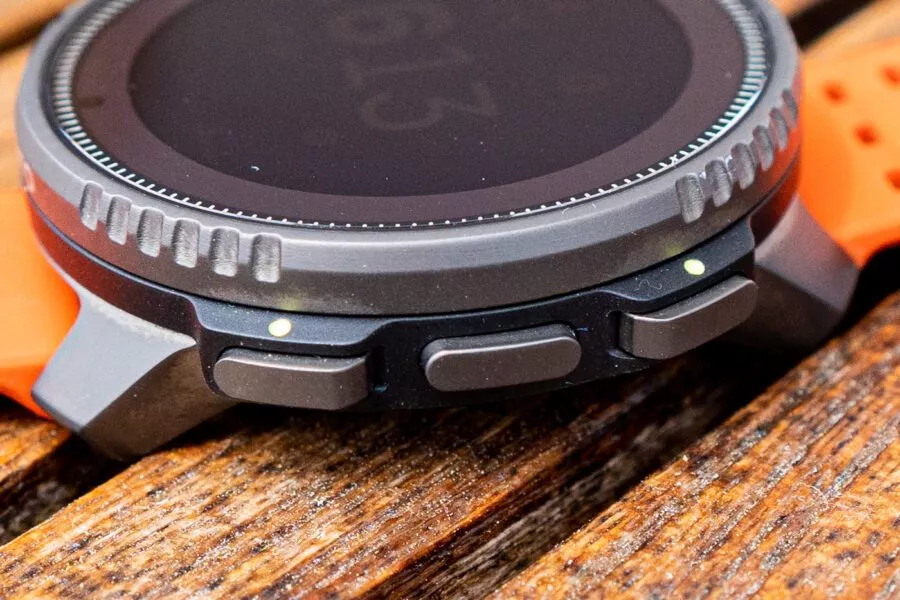

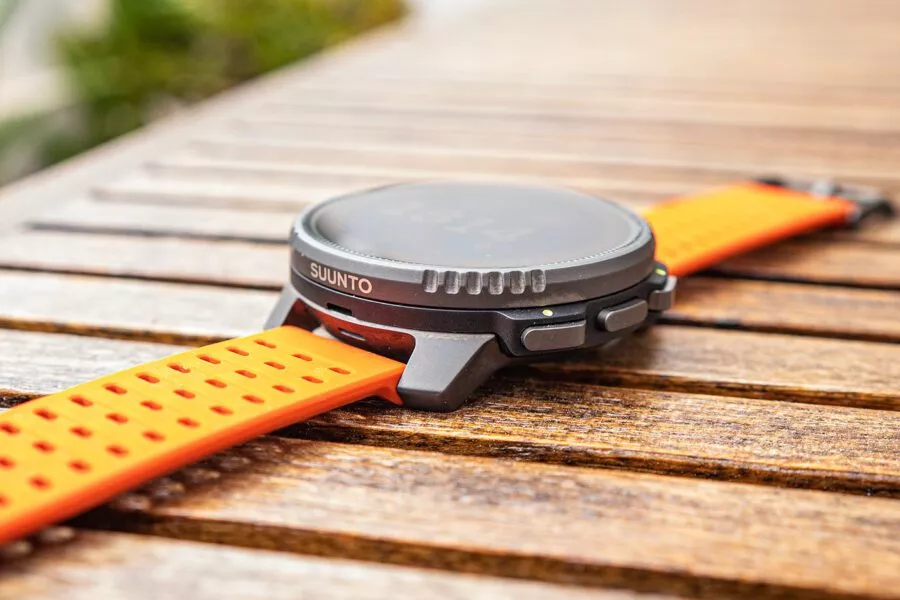
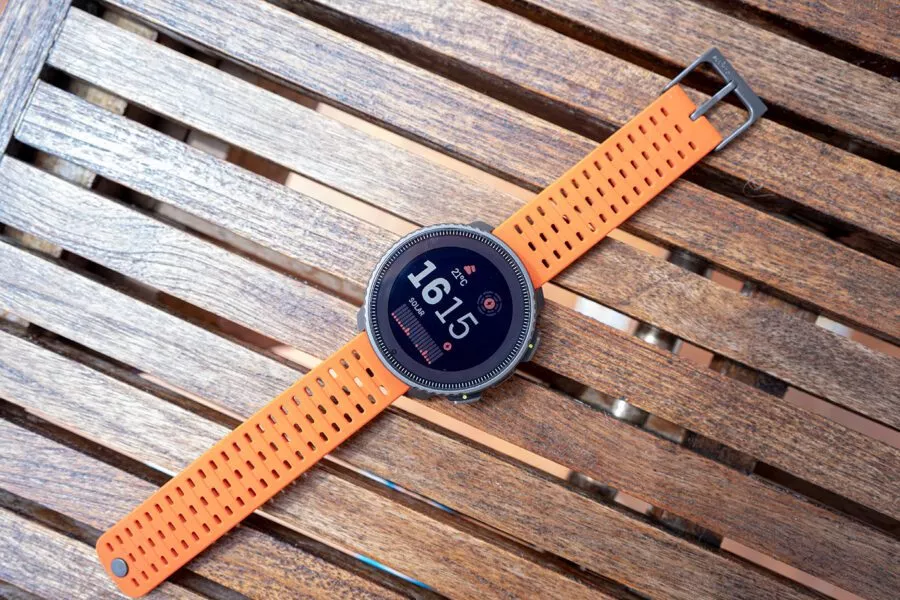


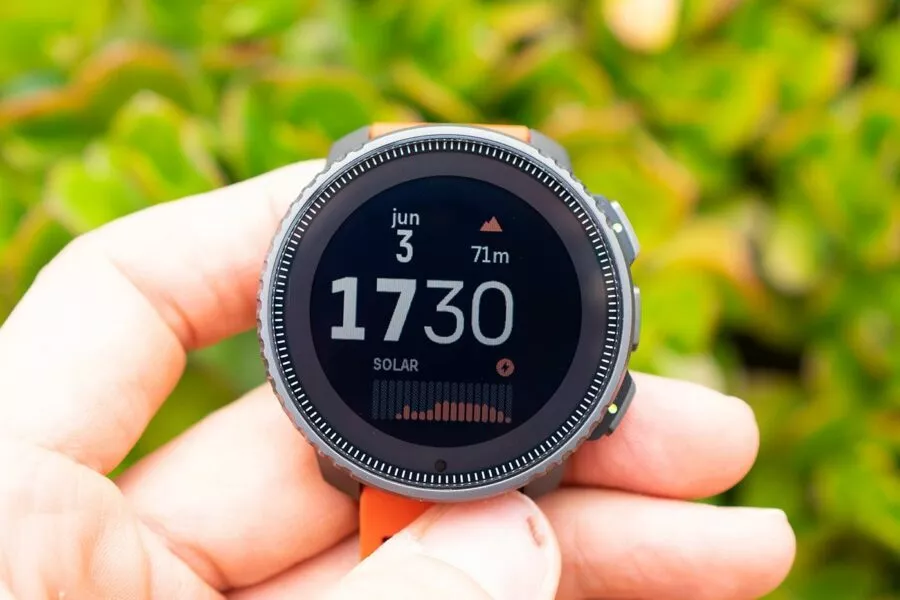
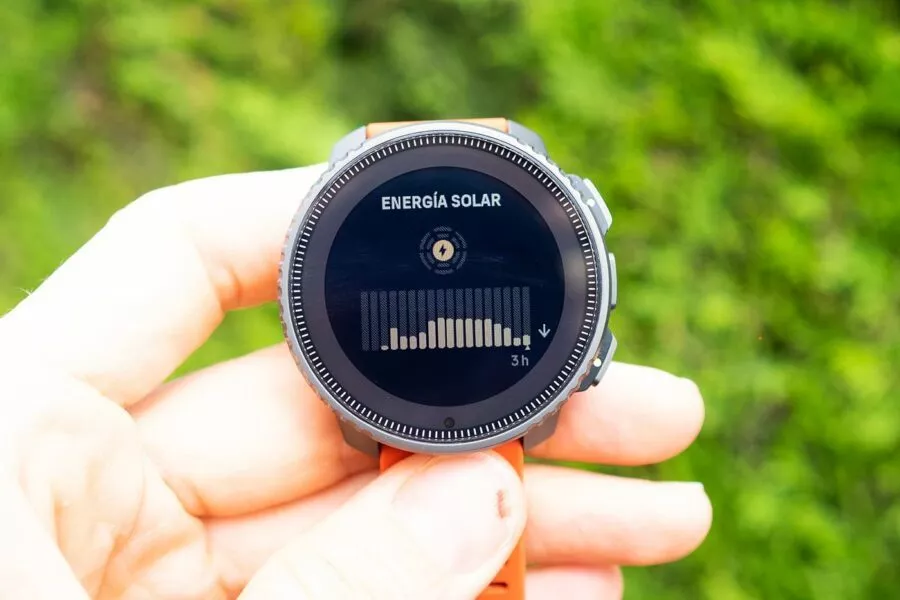
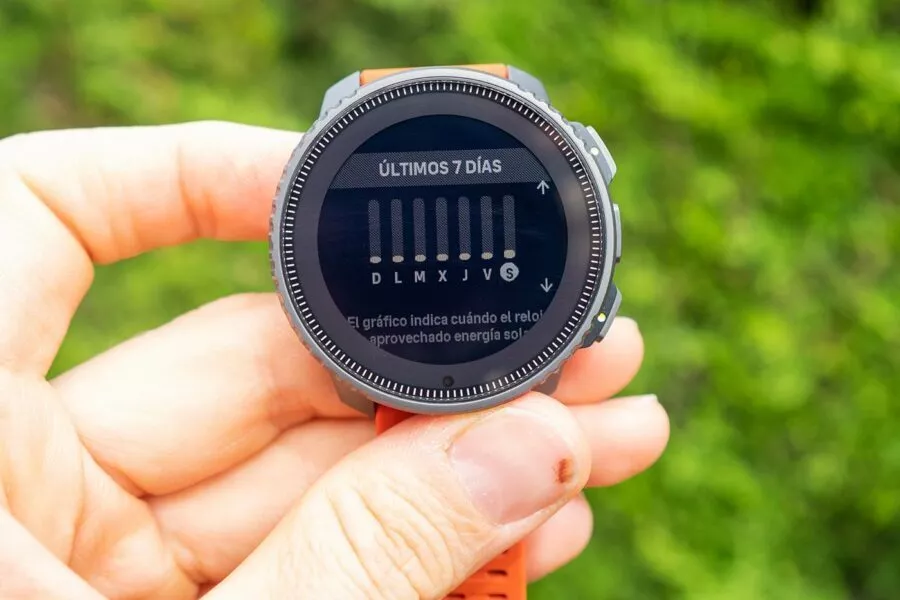
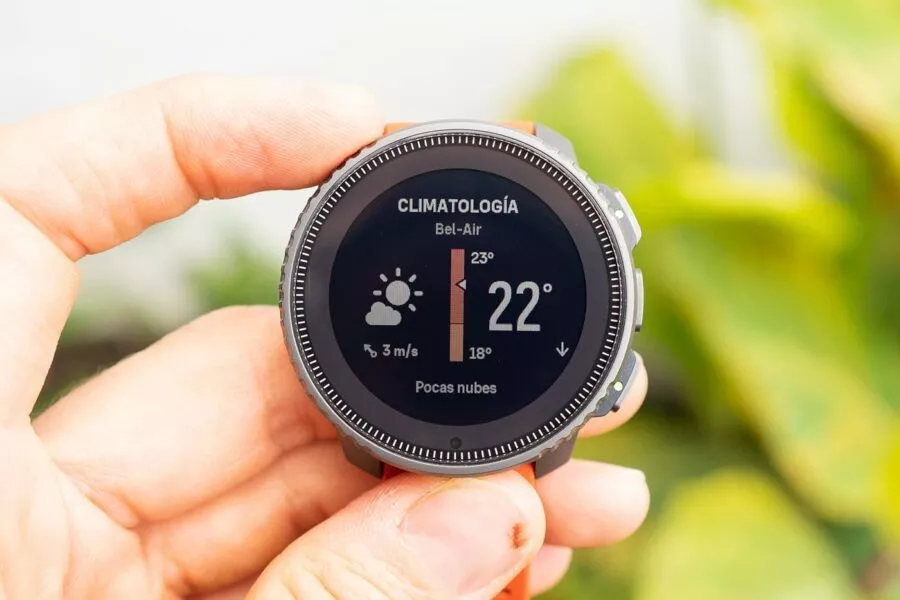
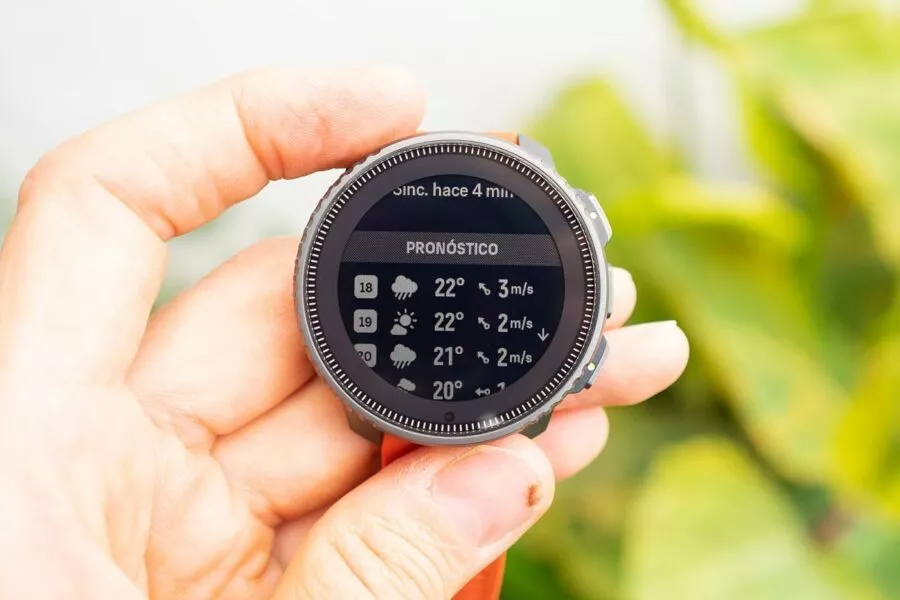
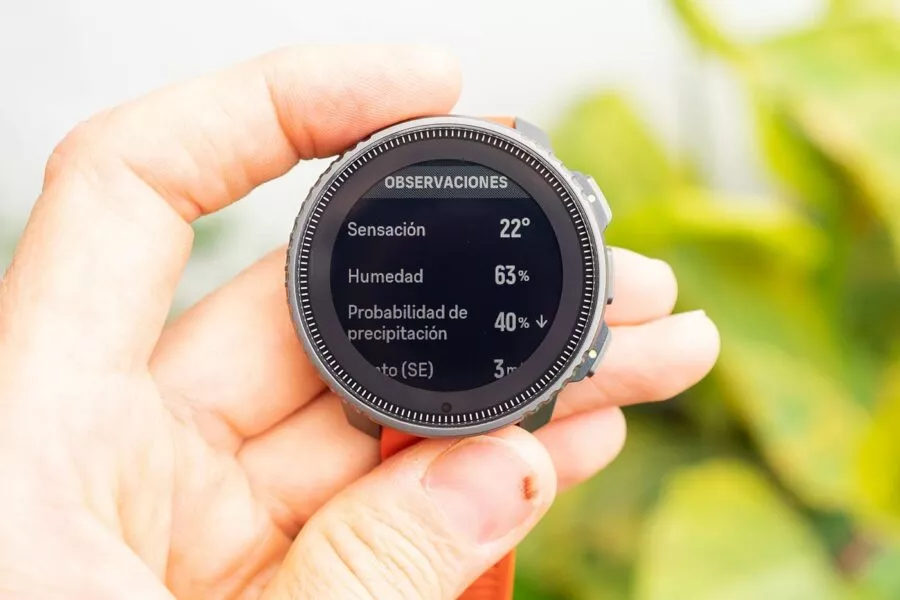
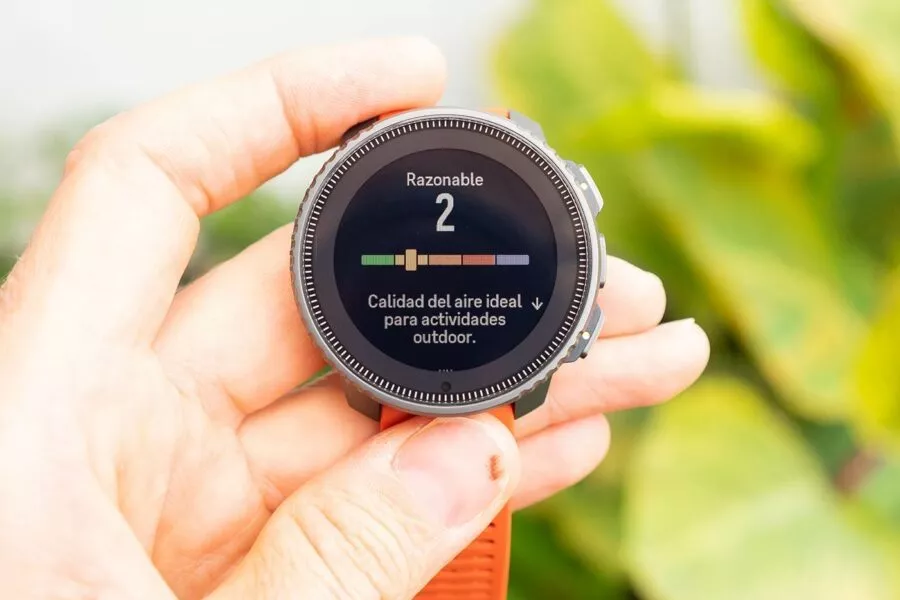
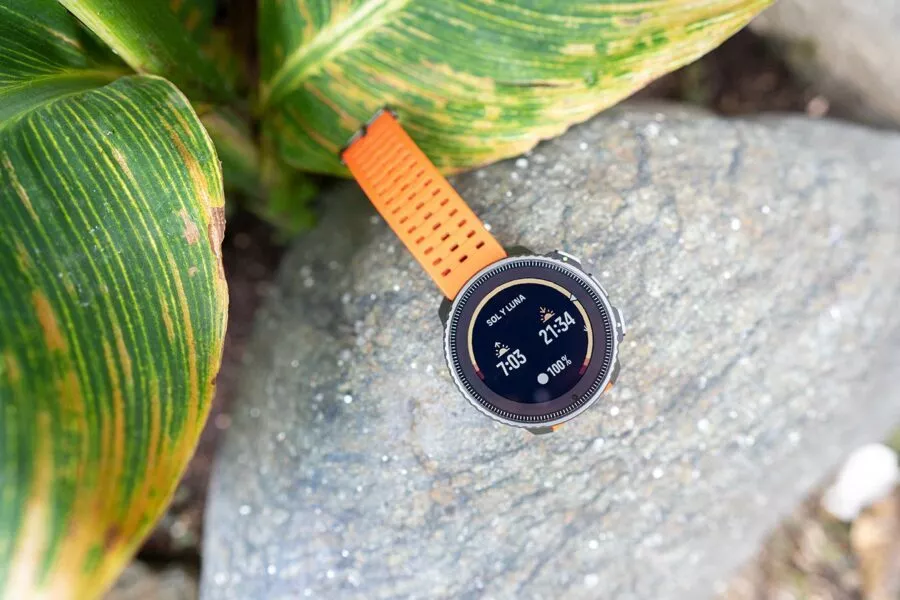
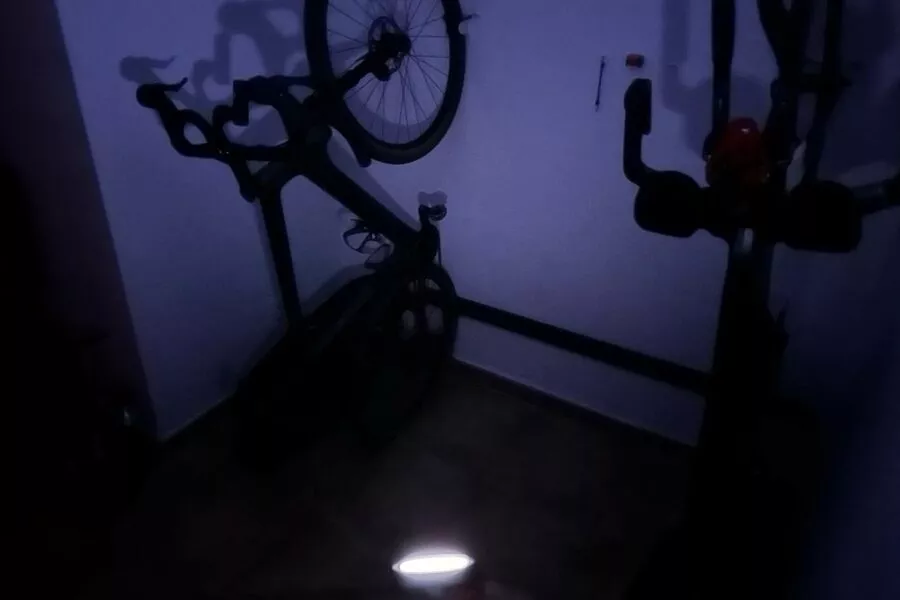
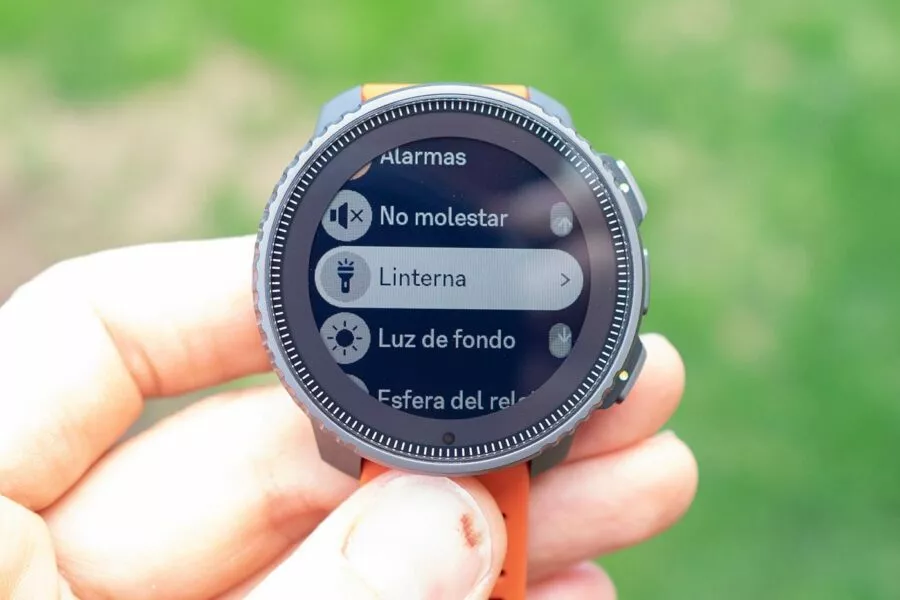
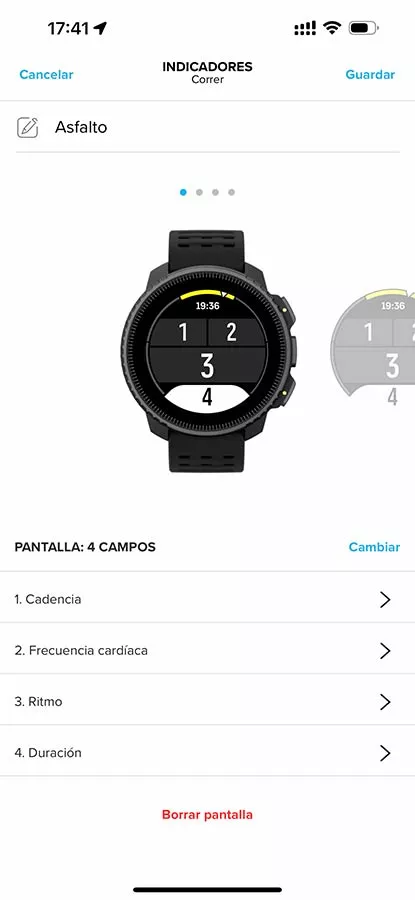
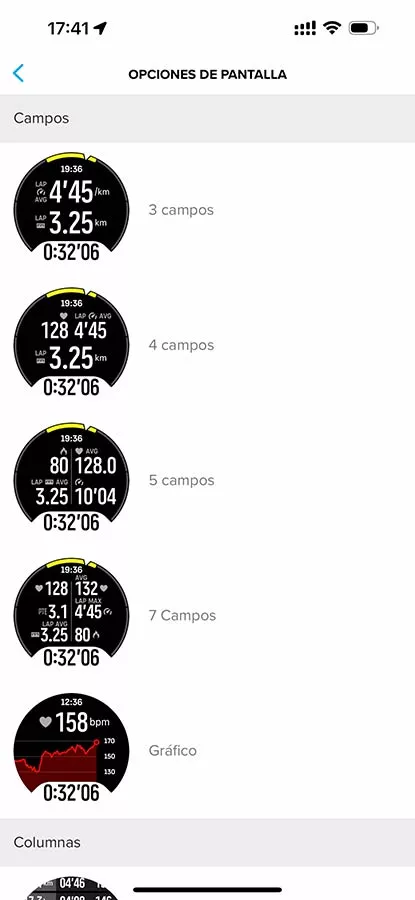
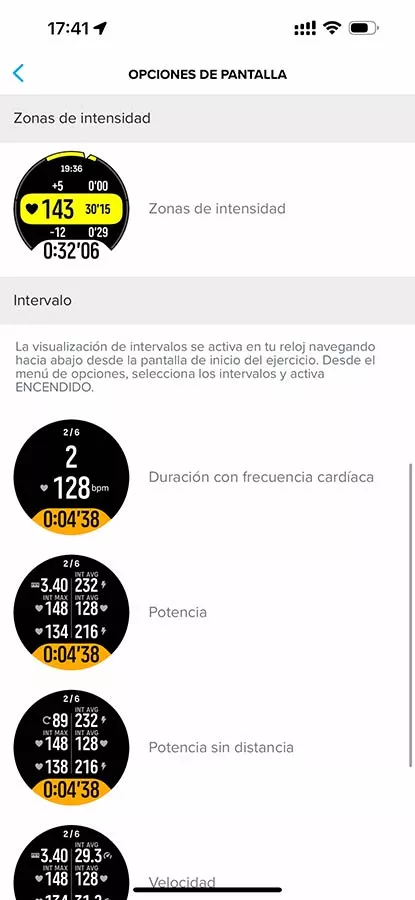
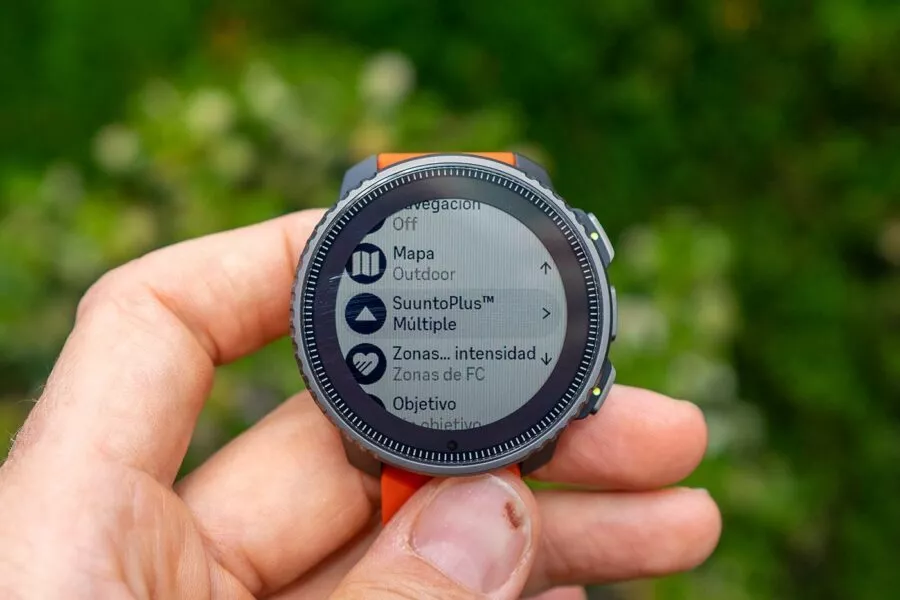
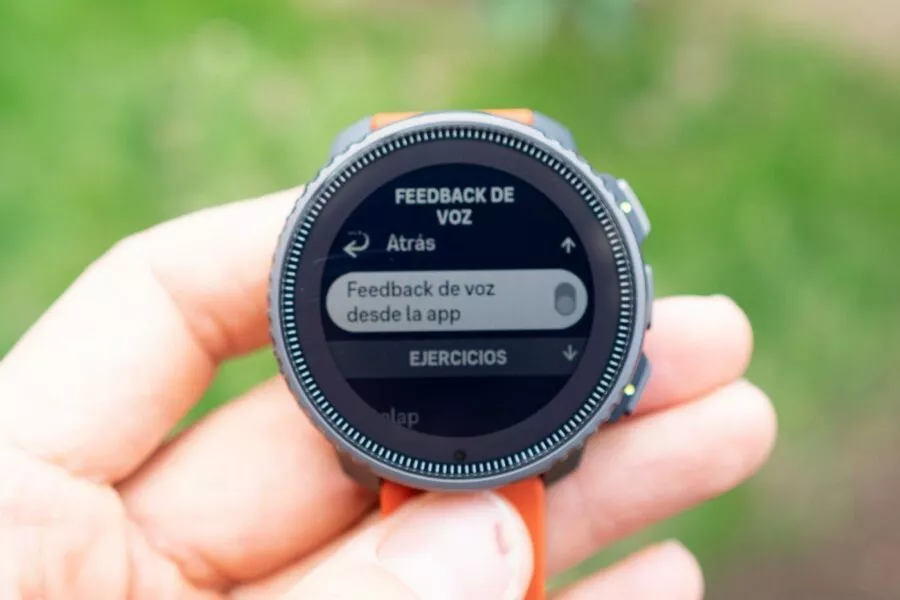
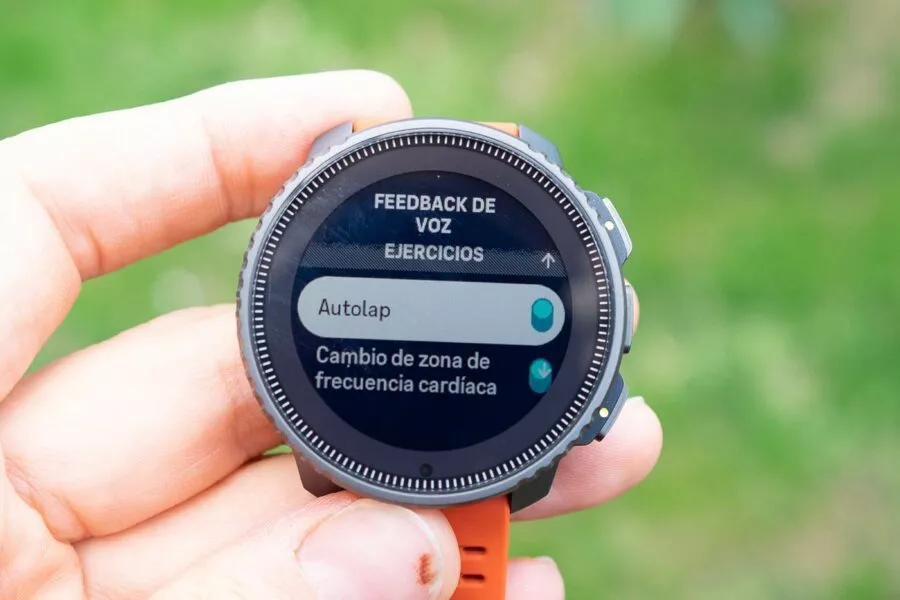
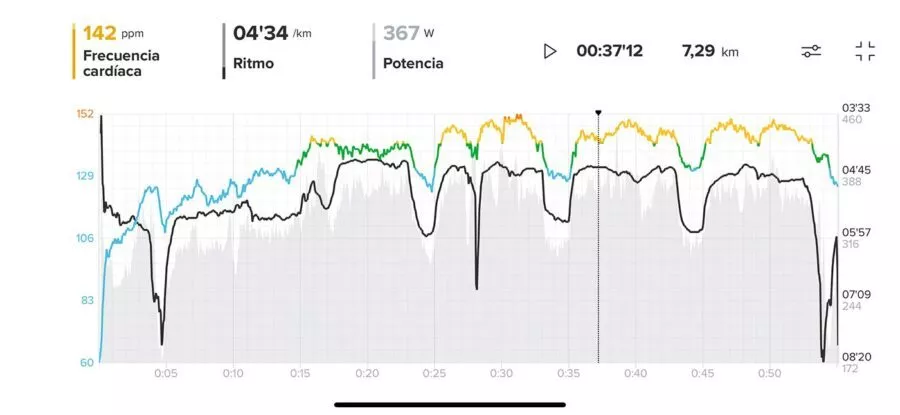
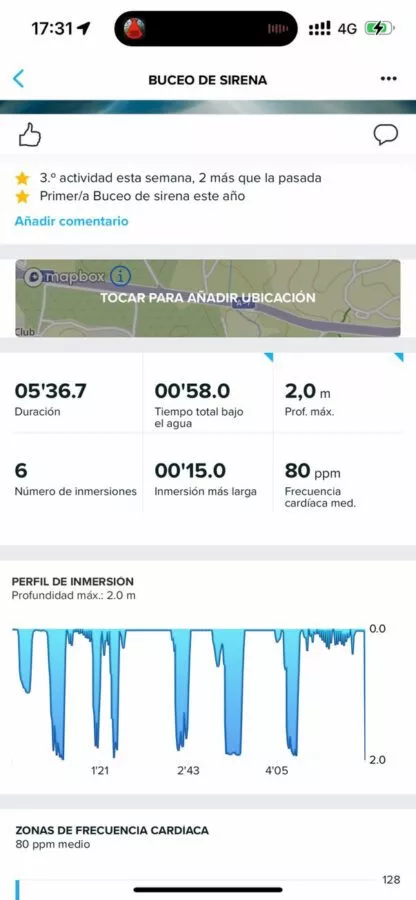
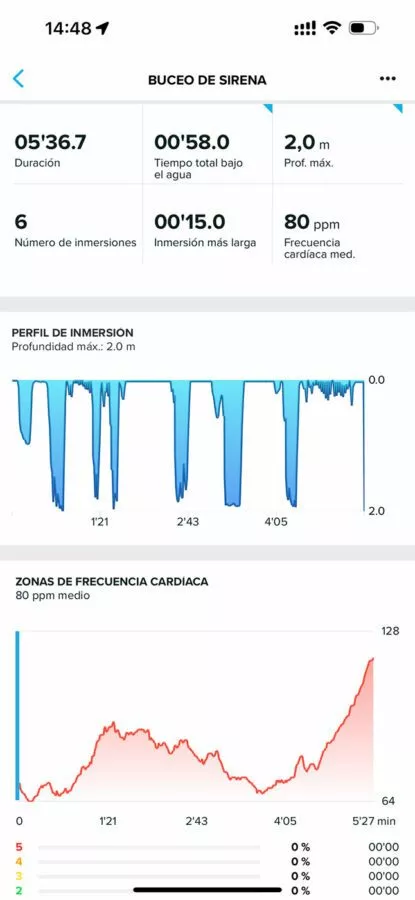

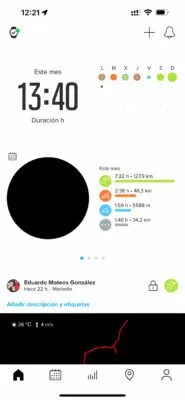
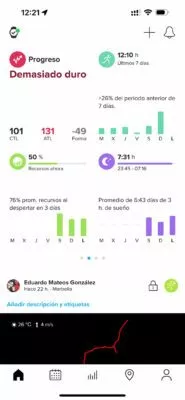
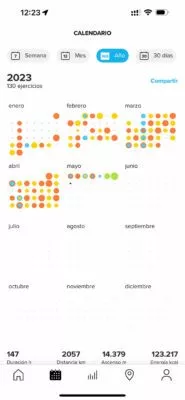

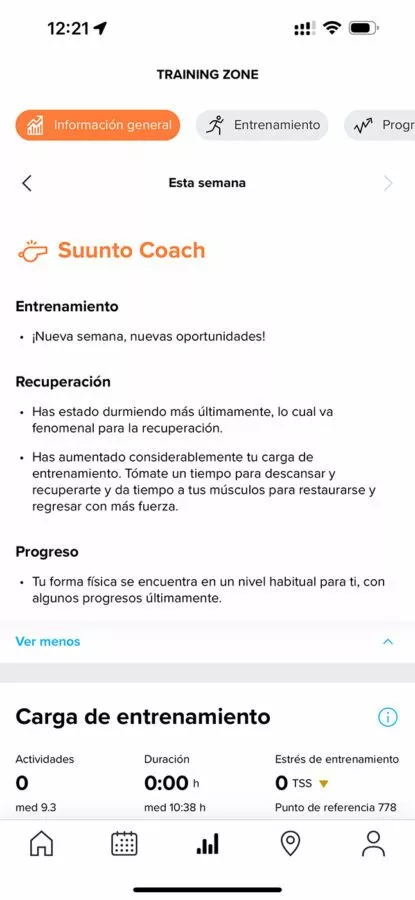



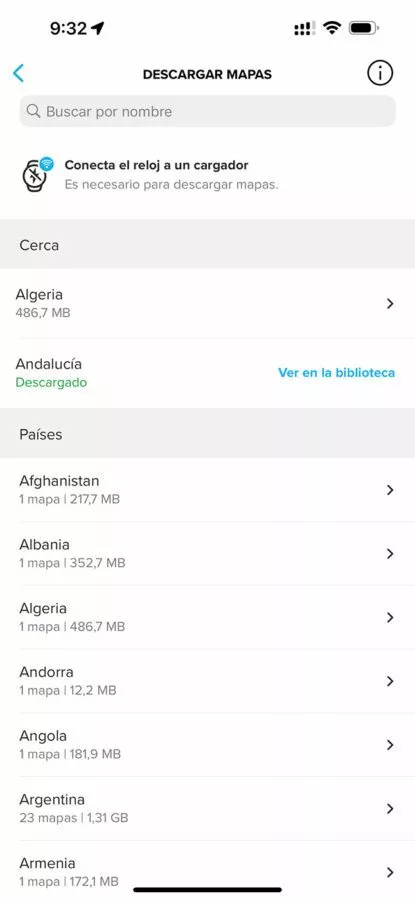

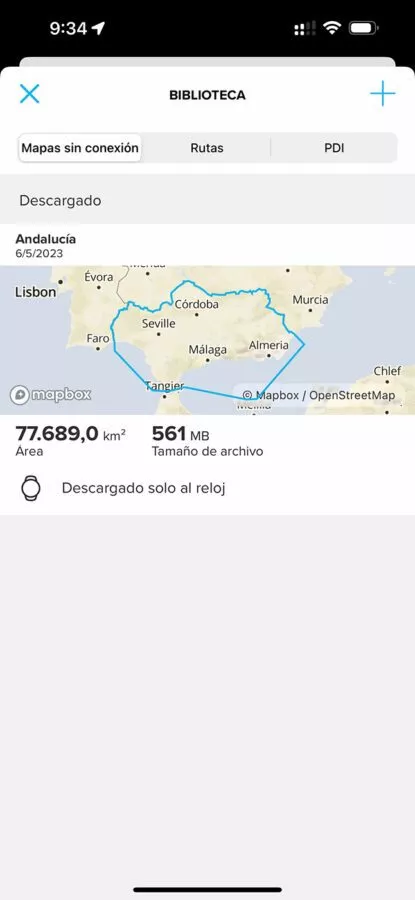
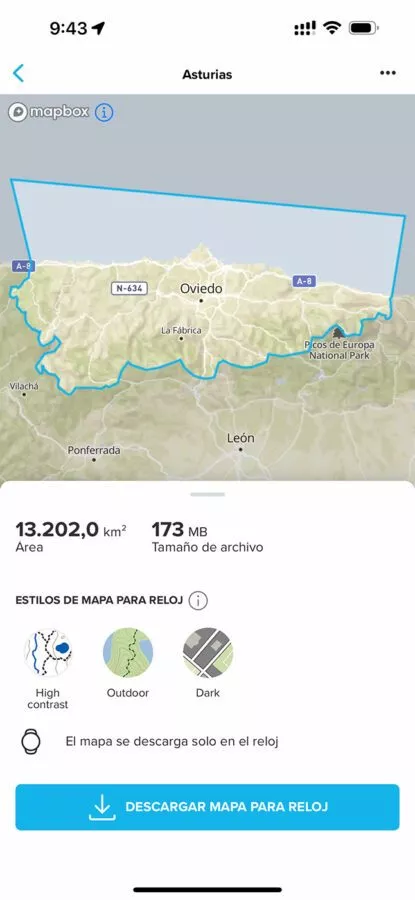
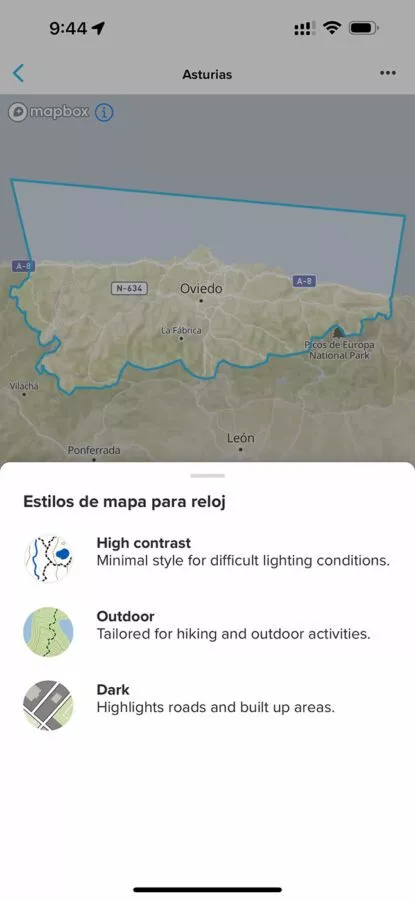



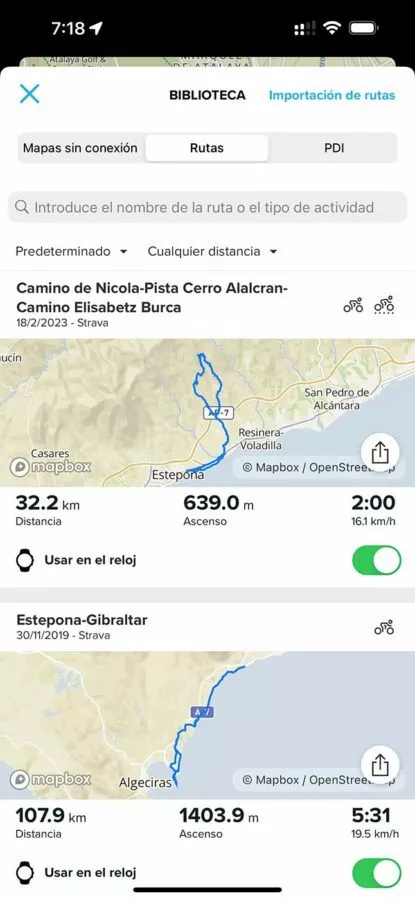
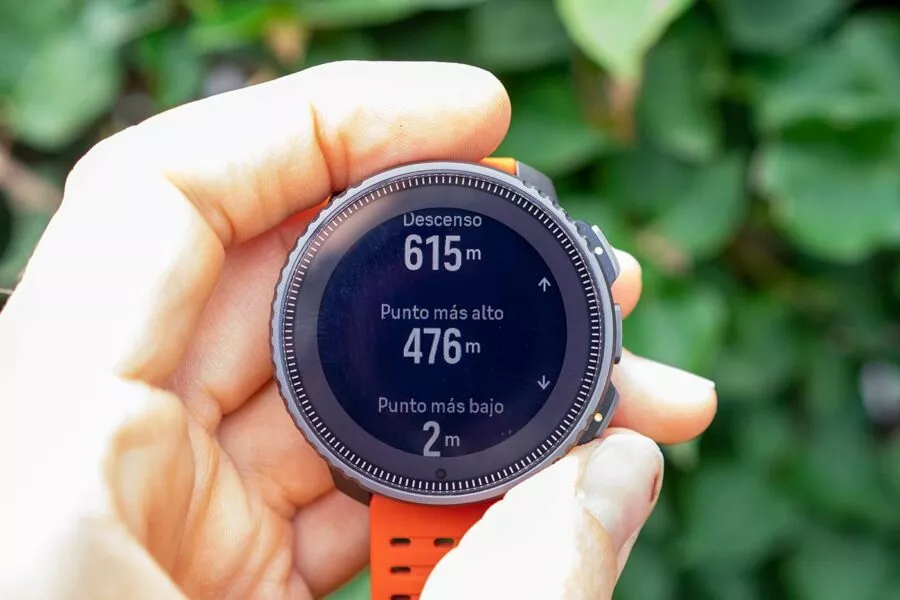
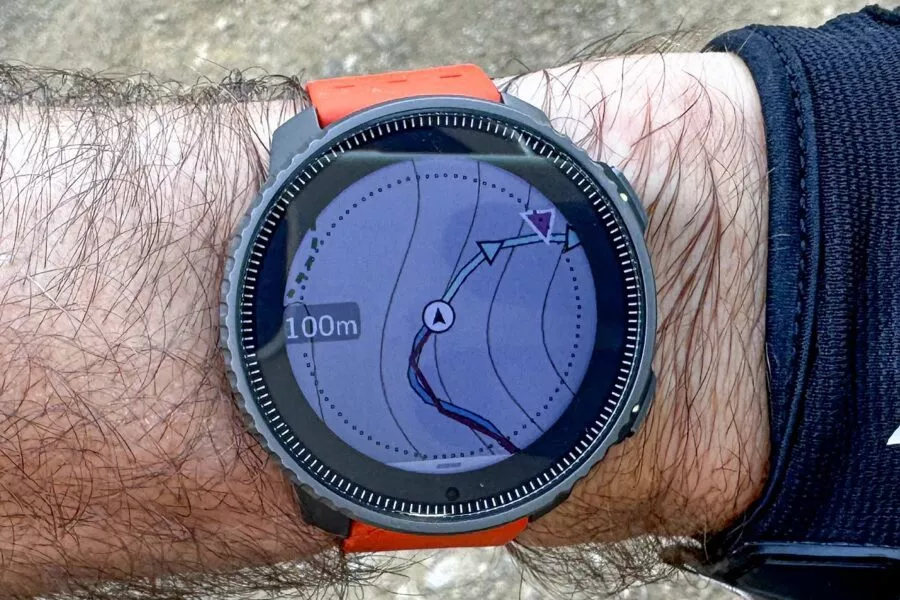

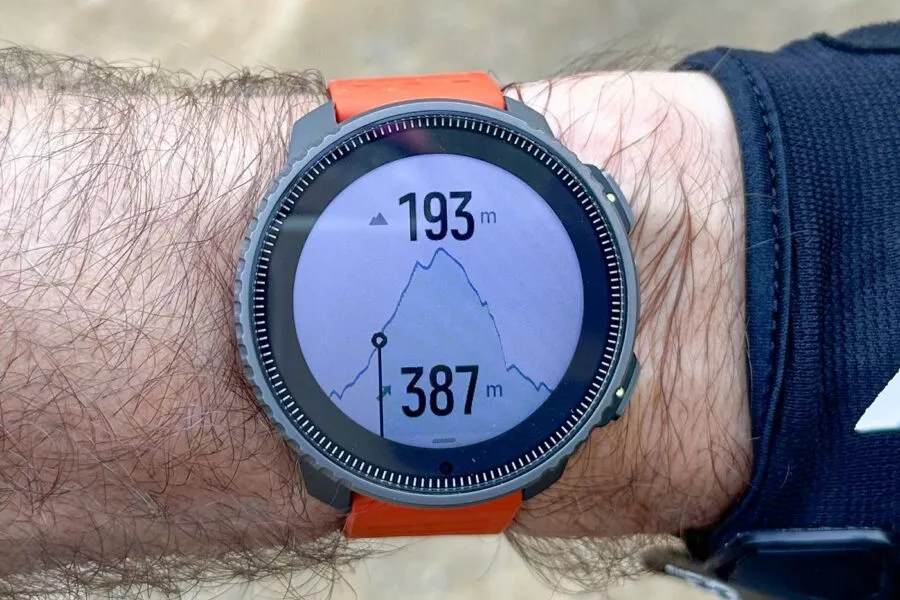
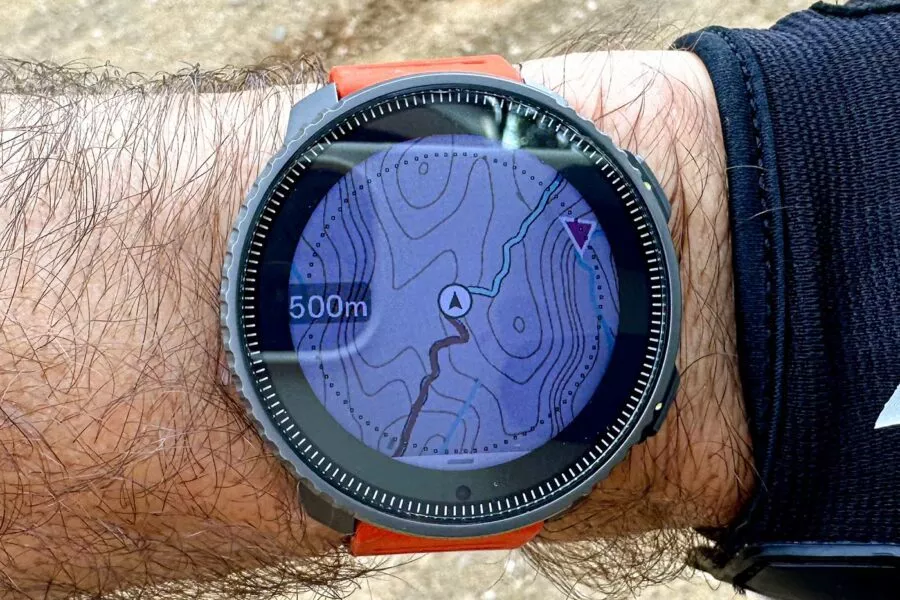

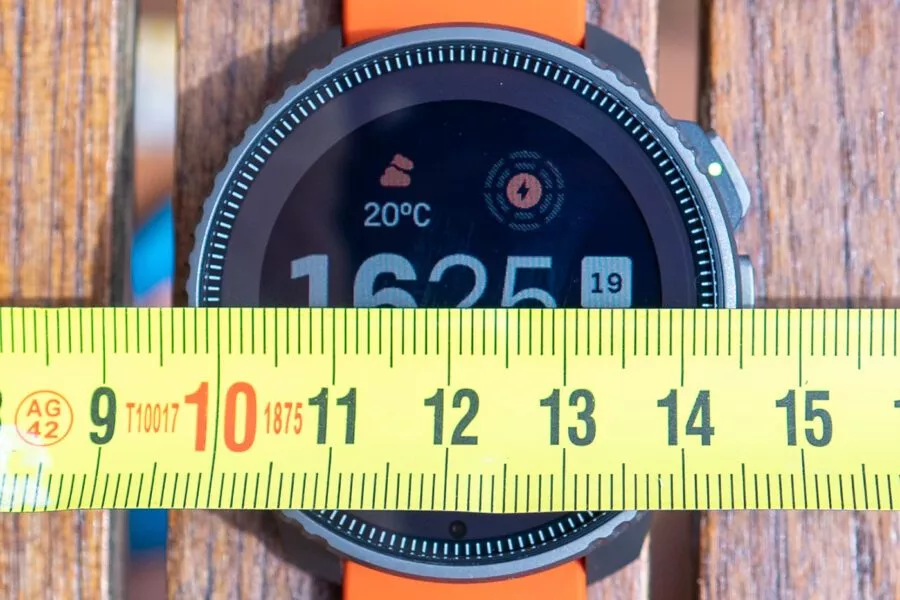
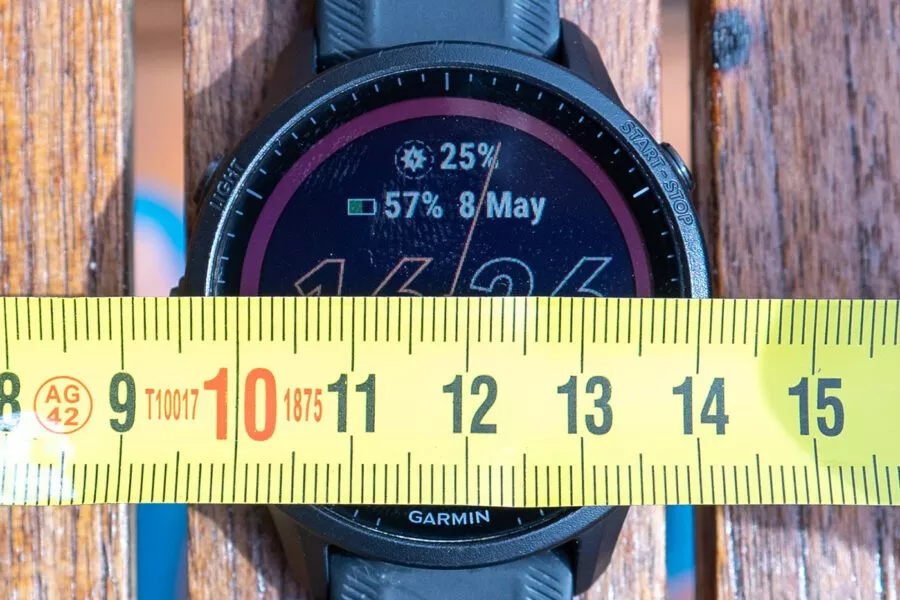
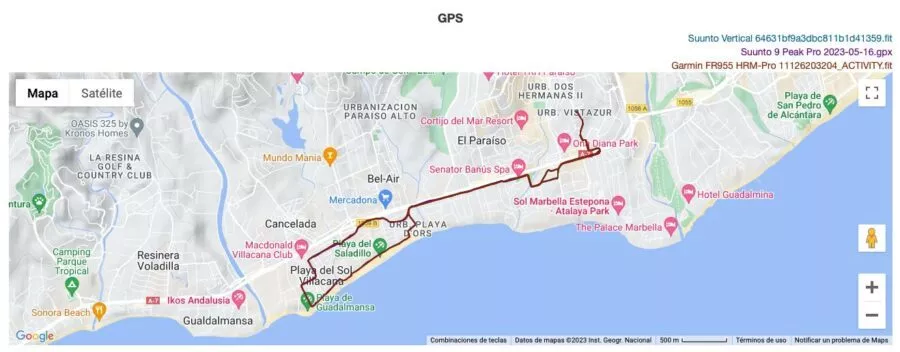
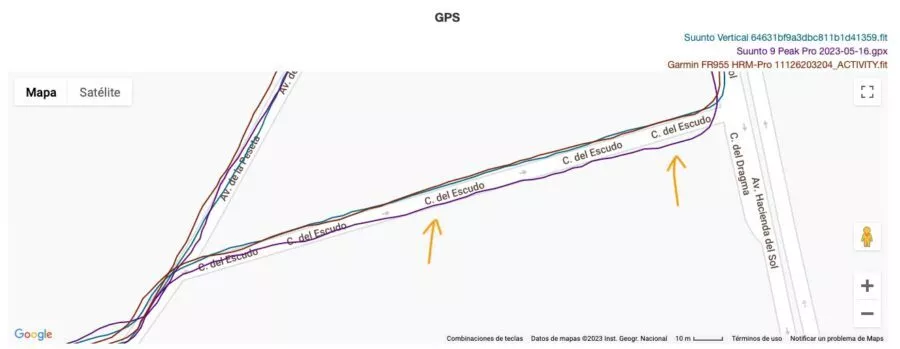

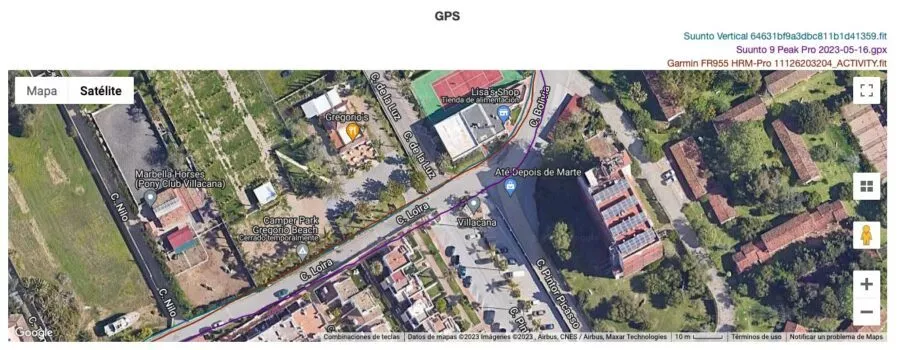

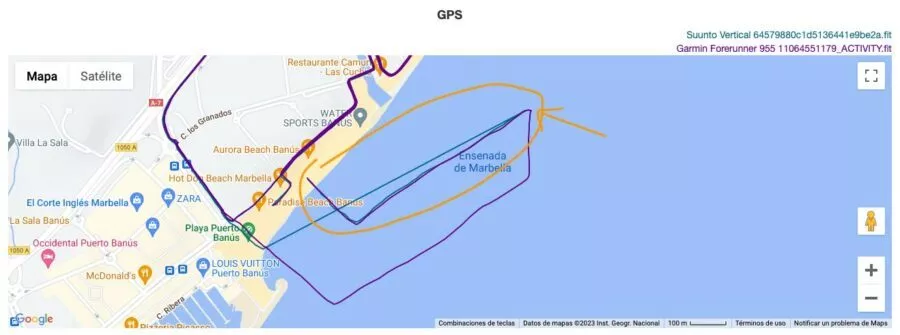
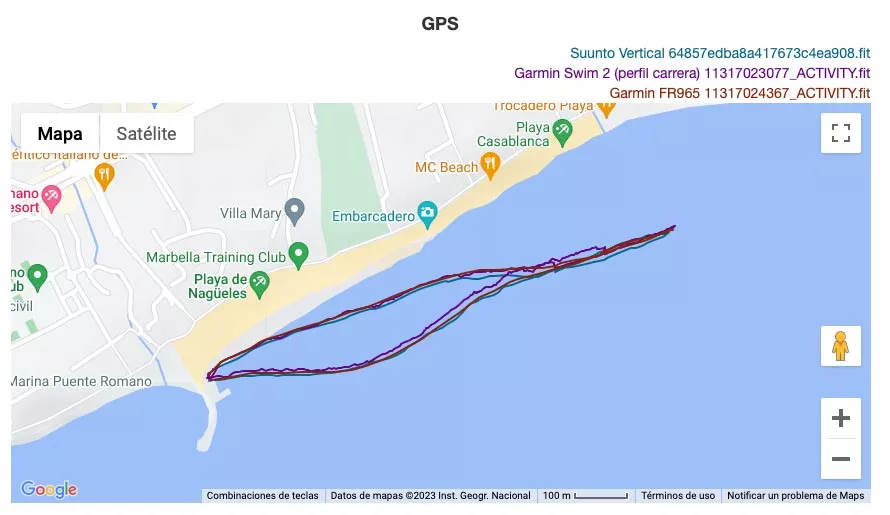
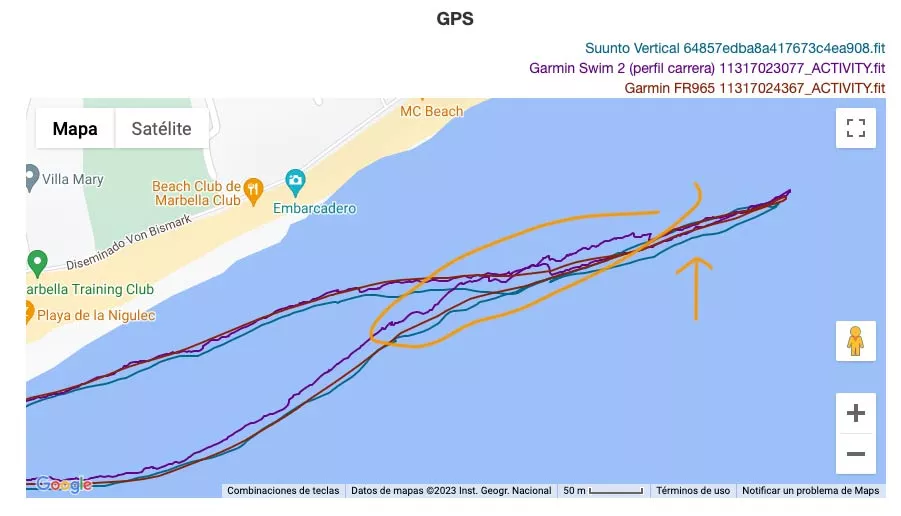

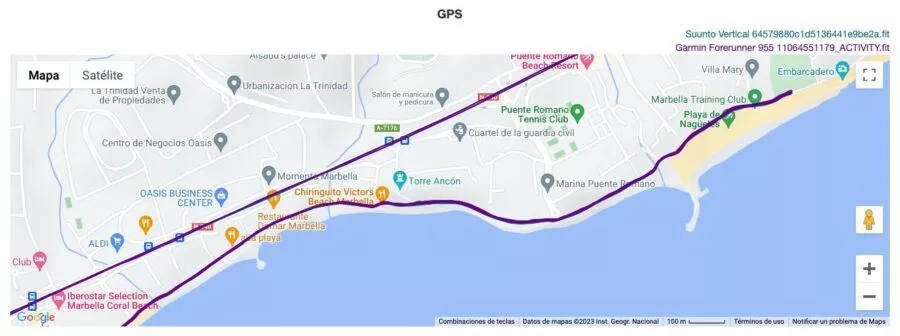
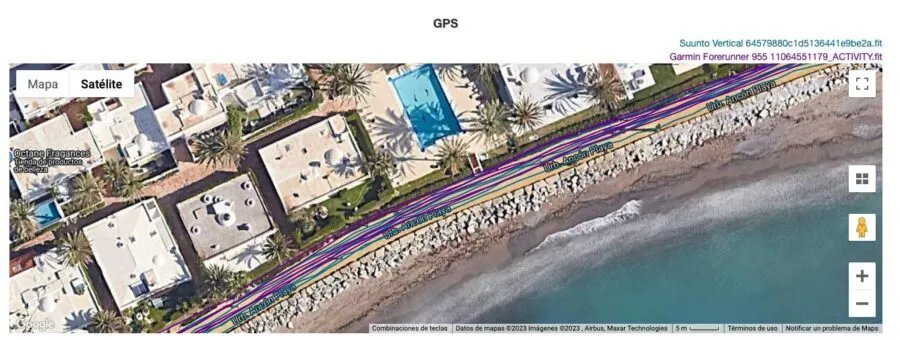
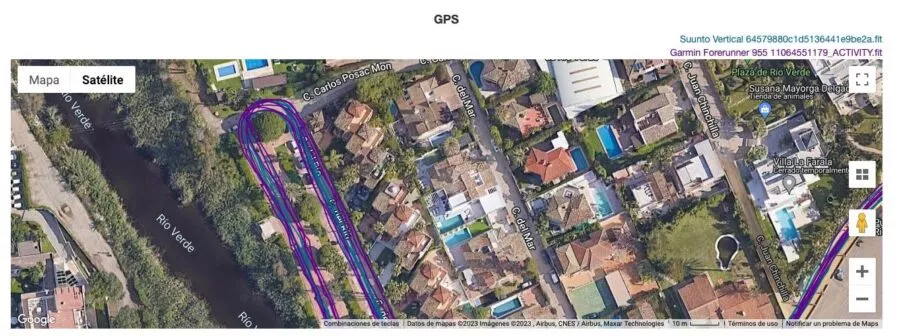

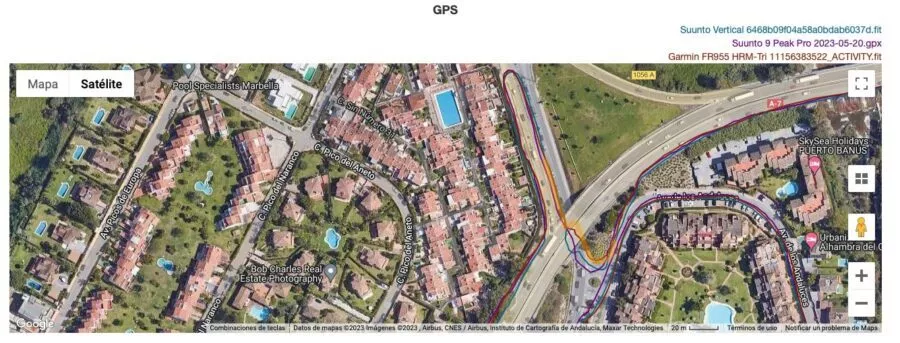
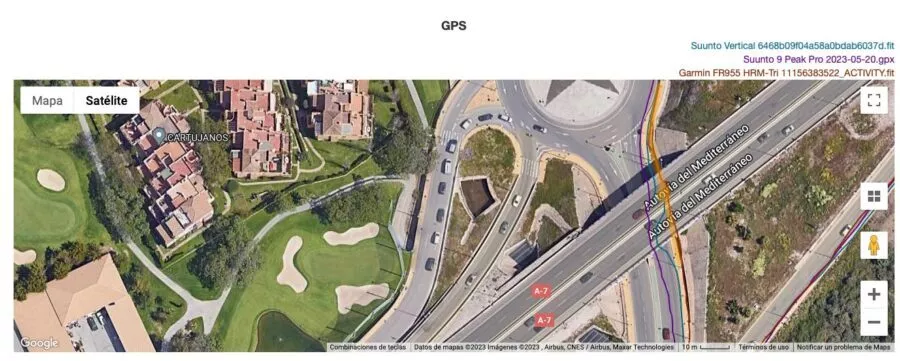
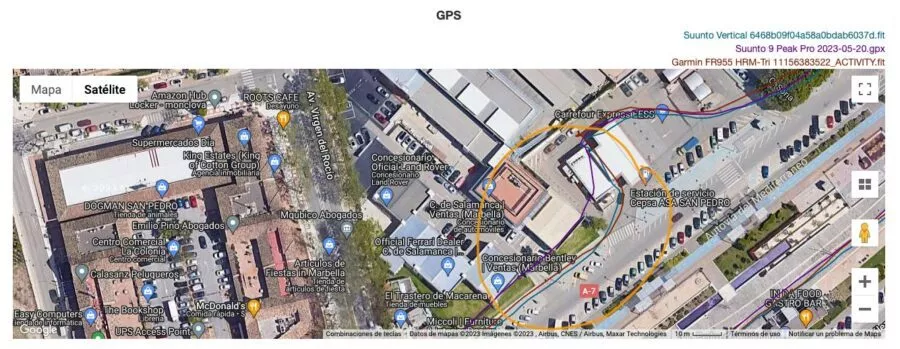
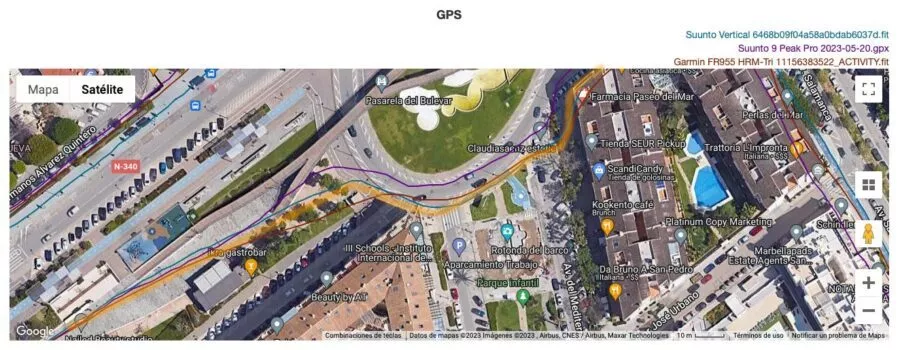




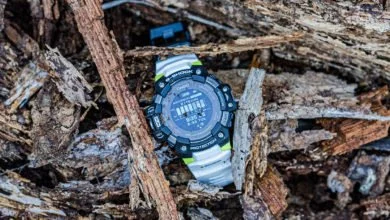
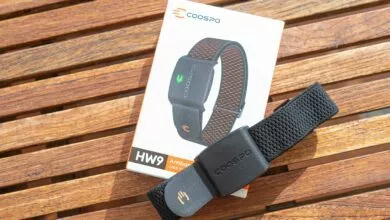
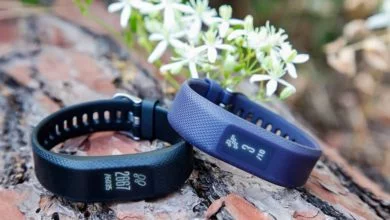
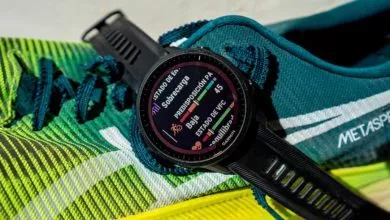
Otra review espectacular ‘made in’ Eduardo Mateos, no te dejas ni un detalle. Enorme…
Muchas gracias Juan
Enhorabuena por esta revisión Eduardo. Pregunta:
Forerunner 965 o Suunto Vertical? lo tenía claro con Garmin pero apareció este bicho y estoy con mis dudas
Gracias Marcos.
Son productos diferentes. El 965 destaca por la pantalla AMOLED y, a pesar de ello, una autonomía suficientemente elevada. Pero el Suunto es fiabilidad y autonomía brutal. Y luego las grandes diferencias en acabados, materiales, etc.
Hola Eduardo, sabes si el vertical puede controlar un rodillo de ciclismo? se pueden programar entrenamientos para ciclismo desde la app? mil gracias y felicidades por esta review y tu gran trabajo en todas!
No Ferran, no tiene esa función
Mil gracias por la respuesta Eduardo!
Buenos días Eduardo, respecto a la versión solar, ¿las diferencias entre los distintos modelos se reduce únicamente al color de la correa, es decir, el cuerpo del reloj en sí es del mismo color en todos ?
Así es, sólo cambia la correa y la caja es la misma siempre
Gracias
Impresionante review, mis felicitaciones y mi agradecimiento van por delante.
Imagino que no tendrás información al respecto, pero no crees que también sería interesante una versión «Peak»?. Es decir, un Vertical de dimensiones algo más contenidas para personas con muñecas pequeñitas (como yo). La competencia, Garmin, lo hace con sus versiones «S» y parece que tiene aceptación. Saludos.
No sé si Suunto lanzará algo más pequeño el año que viene. El Suunto 9 Peak y Peak Pro no terminó de convencer a los usuarios más acérrimos de Suunto. Veremos.
Buenos días Eduardo.
No consigo que el reloj vibre con el paso de los kilómetros.
He probado con cualquier deporte, en carrera, senderismo etc. y nada.
Te ruego ayuda.
Agradecido de antemano.